Hcv what is it. Hepatitis C Vaccine: Challenges, Research, and Future Prospects
Why isn’t there a hepatitis C vaccine available yet. What are the main obstacles in developing an effective HCV vaccine. How close are we to having a hepatitis C vaccine.
The Complex Nature of the Hepatitis C Virus
Hepatitis C virus (HCV) has proven to be a formidable opponent in the quest for vaccine development. Unlike hepatitis A and B, for which effective vaccines exist, HCV presents unique challenges that have hindered progress.
What makes HCV so difficult to target with a vaccine? The virus’s high genetic variability is a major factor. HCV occurs in at least seven genetically distinct forms (genotypes) with approximately 60 identified subtypes. This diversity means that a global vaccine would need to protect against multiple variants of the virus simultaneously.
Genetic Variability of HCV
- At least 7 major genotypes
- Approximately 60 subtypes identified
- Different genotypes prevalent in various parts of the world
How does this genetic diversity impact vaccine development? It necessitates the creation of a vaccine that can generate broad immunity against multiple viral strains. This is a significant scientific challenge that researchers are still working to overcome.
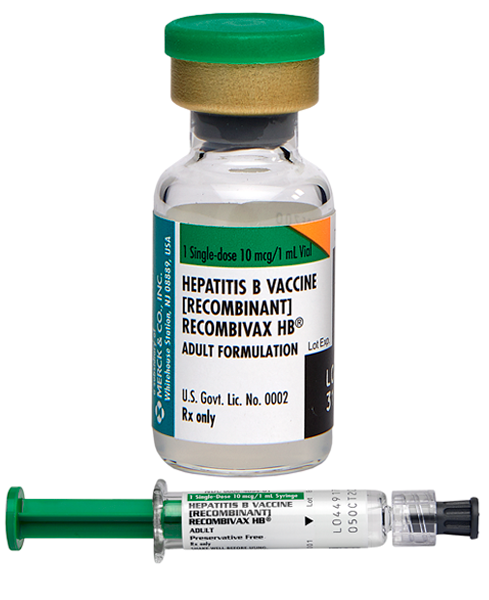
Limitations in Animal Models for HCV Research
Another major obstacle in HCV vaccine development has been the lack of suitable animal models for studying the virus. Chimpanzees were initially used as they can be infected with HCV in a manner similar to humans. However, ethical concerns and high costs have severely limited their use in medical research.
What alternatives are researchers exploring? Scientists are working on developing mouse models that can be infected with HCV, but these have limitations in fully replicating human infections. The lack of an ideal animal model has slowed progress in understanding the virus’s behavior and testing potential vaccine candidates.
Challenges with Animal Models
- Ethical and cost concerns limit chimpanzee research
- Mouse models do not fully replicate human HCV infections
- Difficulty in studying immune responses and vaccine efficacy
Current State of HCV Vaccine Research
Despite the challenges, efforts to develop an HCV vaccine have been ongoing for over three decades. In recent years, there have been some promising developments in vaccine research.

What types of HCV vaccines are currently being studied? Researchers are exploring several approaches, including:
- Prophylactic vaccines to prevent infection
- Therapeutic vaccines to treat existing infections
- Vaccines targeting specific viral proteins
- DNA-based vaccines
Are there any HCV vaccines in clinical trials? Yes, there are ongoing clinical trials testing potential HCV vaccines. One notable example is a therapeutic vaccine trial aimed at people with chronic hepatitis C. This trial is designed to determine if the vaccine can stimulate the body’s immune response to treat existing infections and potentially protect against future exposures.
Advancements in HCV Treatment
While the search for an effective vaccine continues, significant progress has been made in treating hepatitis C. New antiviral medications have revolutionized HCV treatment in recent years.
How effective are these new treatments? Direct-acting antiviral drugs (DAAs) can now cure nearly everyone infected with hepatitis C. These medications are highly effective, with cure rates often exceeding 95% for most HCV genotypes.

Benefits of Modern HCV Treatments
- High cure rates (>95% for most genotypes)
- Shorter treatment duration (typically 8-12 weeks)
- Fewer side effects compared to older therapies
- Effective against multiple HCV genotypes
Do these treatments eliminate the need for a vaccine? While the new treatments are highly effective, a vaccine remains an important goal. Prevention through vaccination would be more cost-effective and could help eliminate HCV globally, especially in regions where access to expensive treatments is limited.
The Importance of HCV Screening
In the absence of a vaccine, early detection and treatment of HCV infections are crucial. The U.S. Preventive Services Task Force recommends universal screening for adults aged 18-79 years.
Who should be screened for hepatitis C? While universal screening is recommended for adults, certain groups are at higher risk and should be prioritized for testing:
- People who have ever injected or inhaled illicit drugs
- Individuals born between 1945 and 1965
- Recipients of blood transfusions or organ transplants before 1992
- Healthcare workers exposed to blood or needle sticks
- People with HIV infection
- Children born to mothers with hepatitis C
How is HCV screening performed? Initial screening typically involves a blood test to detect HCV antibodies. If this test is positive, additional tests are done to confirm active infection and determine the viral load and genotype.

The Global Impact of Hepatitis C
Hepatitis C remains a significant global health challenge. Understanding its worldwide impact underscores the importance of continued efforts in vaccine development and treatment accessibility.
How many people are affected by hepatitis C globally? According to the World Health Organization, an estimated 58 million people worldwide have chronic HCV infection. Each year, approximately 1.5 million new infections occur.
Global HCV Statistics
- 58 million people with chronic HCV infection
- 1.5 million new infections annually
- Approximately 290,000 deaths per year due to HCV-related causes
What regions are most affected by HCV? The prevalence of hepatitis C varies globally, with higher rates in certain regions such as North Africa, the Middle East, and Central and East Asia. However, HCV infections occur worldwide, affecting both developed and developing nations.
Future Prospects for HCV Vaccine Development
Despite the challenges, researchers remain committed to developing an effective HCV vaccine. Recent advances in understanding the virus and the immune response to it have provided new avenues for vaccine design.

What approaches show promise for future HCV vaccines? Several strategies are being explored:
- Vaccines targeting conserved regions of the virus
- Approaches to generate broadly neutralizing antibodies
- T cell-based vaccines to enhance cellular immunity
- Combination approaches targeting multiple aspects of the immune response
When might we expect an HCV vaccine to be available? It’s difficult to predict an exact timeline, as vaccine development is a complex and often lengthy process. However, with ongoing research and clinical trials, there is hope that significant progress will be made in the coming years.
Potential Benefits of an HCV Vaccine
- Prevention of new infections
- Reduced healthcare costs associated with HCV treatment
- Potential for global elimination of hepatitis C
- Improved quality of life for at-risk populations
While the development of an HCV vaccine has been challenging, the scientific community remains optimistic. The lessons learned from COVID-19 vaccine development may accelerate progress in other areas of vaccine research, including hepatitis C. As we continue to improve our understanding of the virus and refine vaccine technologies, the goal of an effective HCV vaccine moves closer to reality.

Why isn’t there a hepatitis C vaccine?
My children received vaccines for hepatitis A and B. Why isn’t there a vaccine for hepatitis C?
Answer From Stacey A. Rizza, M.D.
Efforts to develop a hepatitis C vaccine started more than 30 years ago, when the hepatitis C virus was identified. Since then, researchers have studied several potential vaccines in animals. Some of these vaccines, developed mainly in the past decade, have undergone limited testing in people.
One ongoing clinical trial includes:
A therapeutic vaccine trial. Researchers are testing a vaccine therapy on people who already have chronic hepatitis C. The purpose is to determine if the vaccine can help the body build an immune response and thereby treat the hepatitis C infection. It will also determine if the vaccine is safe and able to protect against future infection.
If this trial has good results, larger trials will be necessary to verify this effect and determine the best way to deploy the vaccine.
Progress on developing a successful vaccine has been slow for a number of reasons, including:
The unique characteristics of the virus
The hepatitis C virus is more variable than hepatitis A and hepatitis B viruses. Hepatitis C occurs in at least seven genetically distinct forms (genotypes) with multiple subtypes. About 60 subtypes have been identified.
Different genotypes cause infections in different parts of the world. A global vaccine would have to protect against all variants of the virus.
Limited animal models of hepatitis C infection
A hepatitis C infection in chimpanzees is similar to an infection in humans. However, ethical and cost concerns limit medical research with these animals.
Although researchers are still working to develop an effective vaccine, new medications can cure nearly everyone who is infected with hepatitis C.
With
Stacey A. Rizza, M.D.
Rizza, M.D.
- Acute hepatitis C infection
- Early hepatitis C infection: How often does it become chronic?
Oct. 28, 2020
Show references
- Chopra S. Characteristics of the hepatitis C virus. https://www.uptodate.com/contents/search. Accessed Oct. 7, 2020.
- Sepulveda-Crespo D, et al. Hepatitis C virus vaccine design: Focus on the humoral immune response. Journal of Biomedical Science. 2020; doi:10.1186/s12929-020-00669-4.
- Bailey JR, et al. Approaches, progress and challenges to hepatitis C vaccine development. Gastroenterology. 2019; doi:10.1053/j.gastro.2018.08.060.
- Lombardi A, et al. Hepatitis C: Is eradication possible? Liver International: Official Journal of the International Association for the Study of the Liver. 2019; doi:10.1111/liv.14011.
- Hepatitis disease-specific research. National Institute of Allergy and Infectious Diseases. https://www.niaid.nih.gov/diseases-conditions/hepatitis-research. Accessed Oct. 16, 2020.
- DNA vaccine therapy in treating patients with chronic hepatitis C virus infection. ClinicalTrials.gov. https://clinicaltrials.gov/ct2/show/NCT02772003?term=Inovio&cond=Hepatitis+C&draw=2&rank=4. Accessed Oct. 16, 2020.
See more Expert Answers
Products and Services
- Book: Mayo Clinic on Digestive Health
.
Hepatitis C – Diagnosis and treatment
Diagnosis
Screening for hepatitis C
The U.S. Preventive Services Task Force recommends that all adults ages 18 to 79 years be screened for hepatitis C, even those without symptoms or known liver disease. Screening for HCV is especially important if you’re at high risk of exposure, including:
- Anyone who has ever injected or inhaled illicit drugs
- Anyone who has abnormal liver function test results with no identified cause
- Babies born to mothers with hepatitis C
- Health care and emergency workers who have been exposed to blood or accidental needle sticks
- People with hemophilia who were treated with clotting factors before 1987
- People who have undergone long-term hemodialysis treatments
- People who received blood transfusions or organ transplants before 1992
- Sexual partners of anyone diagnosed with hepatitis C infection
- People with HIV infection
- Anyone born from 1945 to 1965
- Anyone who has been in prison
Other blood tests
If an initial blood test shows that you have hepatitis C, additional blood tests will:
- Measure the quantity of the hepatitis C virus in your blood (viral load)
- Identify the genotype of the virus
Tests for liver damage
Doctors typically use one or more of the following tests to assess liver damage in chronic hepatitis C.
- Magnetic resonance elastography (MRE). A noninvasive alternative to a liver biopsy (see below), MRE combines magnetic resonance imaging technology with patterns formed by sound waves bouncing off the liver to create a visual map showing gradients of stiffness throughout the liver. Stiff liver tissue indicates the presence of scarring of the liver (fibrosis) as a result of chronic hepatitis C.
- Transient elastography. Another noninvasive test, transient elastography is a type of ultrasound that transmits vibrations into the liver and measures the speed of their dispersal through liver tissue to estimate its stiffness.
- Liver biopsy. Typically done using ultrasound guidance, this test involves inserting a thin needle through the abdominal wall to remove a small sample of liver tissue for laboratory testing.
- Blood tests. A series of blood tests can indicate the extent of fibrosis in your liver.
Transient elastography
A member of the care team performs transient elastography — a painless alternative to liver biopsy — to assess liver damage.
Treatment
Antiviral medications
Hepatitis C infection is treated with antiviral medications intended to clear the virus from your body. The goal of treatment is to have no hepatitis C virus detected in your body at least 12 weeks after you complete treatment.
Researchers have recently made significant advances in treatment for hepatitis C using new, “direct-acting” antiviral medications, sometimes in combination with existing ones. As a result, people experience better outcomes, fewer side effects and shorter treatment times — some as short as eight weeks. The choice of medications and length of treatment depend on the hepatitis C genotype, presence of existing liver damage, other medical conditions and prior treatments.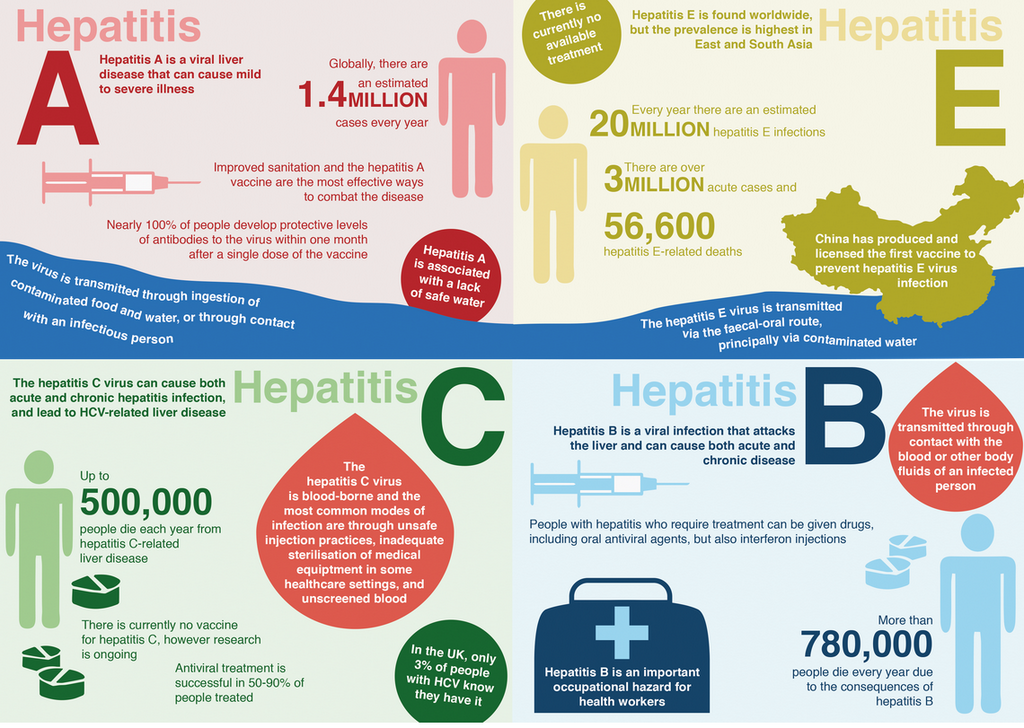
Due to the pace of research, recommendations for medications and treatment regimens are changing rapidly. It is therefore best to discuss your treatment options with a specialist.
Throughout treatment your care team will monitor your response to medications.
Liver transplantation
If you have developed serious complications from chronic hepatitis C infection, liver transplantation may be an option. During liver transplantation, the surgeon removes your damaged liver and replaces it with a healthy liver. Most transplanted livers come from deceased donors, though a small number come from living donors who donate a portion of their livers.
In most cases, a liver transplant alone doesn’t cure hepatitis C. The infection is likely to return, requiring treatment with antiviral medication to prevent damage to the transplanted liver. Several studies have demonstrated that new, direct-acting antiviral medication regimens are effective at curing post-transplant hepatitis C. At the same time, treatment with direct-acting antivirals can be achieved in appropriately selected patients before liver transplantation.
Vaccinations
Although there is no vaccine for hepatitis C, your doctor will likely recommend that you receive vaccines against the hepatitis A and B viruses. These are separate viruses that also can cause liver damage and complicate the course of chronic hepatitis C.
More Information
Show more related information
Clinical trials
Explore Mayo Clinic studies testing new treatments, interventions and tests as a means to prevent, detect, treat or manage this condition.
Lifestyle and home remedies
If you receive a diagnosis of hepatitis C, your doctor will likely recommend certain lifestyle changes. These measures will help keep you healthy longer and protect the health of others as well:
These measures will help keep you healthy longer and protect the health of others as well:
- Stop drinking alcohol. Alcohol speeds the progression of liver disease.
- Avoid medications that may cause liver damage. Review your medications with your doctor, including over-the-counter medications you take as well as herbal preparations and dietary supplements. Your doctor may recommend avoiding certain medications.
- Help prevent others from coming in contact with your blood. Cover any wounds you have and don’t share razors or toothbrushes. Don’t donate blood, body organs or semen, and advise health care workers that you have the virus. Also tell your partner about your infection before you have sex, and always use condoms during intercourse.
Preparing for your appointment
If you think you may have a risk of hepatitis C, see your family doctor. Once you’ve been diagnosed with a hepatitis C infection, your doctor may refer you to a specialist in liver diseases (hepatologist) or infectious diseases.
What you can do
Because appointments can be brief and because there’s often a lot to discuss, it’s a good idea to be well prepared. To prepare, try to:
- Review your medical record. This is particularly important if you are seeing a liver specialist (hepatologist) for the first time after finding out you have hepatitis C. If you had a liver biopsy to check for damage from chronic infection and a blood test to determine which hepatitis C genotype you have, make sure you know the results so you can share them with your specialty care team.
- Be aware of any pre-appointment restrictions. At the time you make the appointment, be sure to ask if there’s anything you need to do in advance, such as restrict your diet.
- Write down any symptoms you’re experiencing, including any that may seem unrelated to the reason for which you scheduled the appointment.

- Make a list of all medications, vitamins or supplements you’re taking.
- Consider taking a family member or friend. Sometimes it can be difficult to remember all the information provided during an appointment. Someone who accompanies you may remember something that you missed or forgot.
To make the most of your time with your doctor, take along a list of questions you want to ask. Put your most important questions at the top of your list, in case time runs out. For a hepatitis C infection, some basic questions to ask your doctor include:
- Should I be tested for other causes of liver disease, such as hepatitis B?
- Has the hepatitis C virus damaged my liver?
- Do I need treatment for a hepatitis C infection?
- What are my treatment options?
- What are the benefits of each treatment option?
- What are the potential risks of each treatment option?
- Is there one treatment you think is best for me?
- I have other medical conditions. How will these affect my hepatitis C treatment?
- Should my family be tested for hepatitis C?
- Is it possible for me to spread the hepatitis C virus to others?
- How can I protect the people around me from hepatitis C?
- Should I see a specialist? Will my insurance cover it?
- Are there brochures or other material that I can take with me? What websites do you recommend?
- What will determine whether I should plan for a follow-up visit?
- Is it safe for me to drink alcohol?
- What medications should I avoid?
Don’t hesitate to ask any other questions that occur to you during your appointment.
What to expect from your doctor
Your doctor is likely to ask you some of the following questions. If you’ve thought about your answers beforehand, this part of the visit may go more quickly than usual, leaving you more time to address your concerns.
- Have you ever had a blood transfusion or an organ transplant? If so, when?
- Have you ever used self-injected drugs not prescribed by your doctor?
- Have you ever been diagnosed with hepatitis or jaundice?
- Does anyone in your family have hepatitis C?
- Is there a history of liver disease in your family?
Share your experience
Share your Mayo Clinic transplant experience with others using social media.
Hepatitis C: How common is sexual transmission?
Hepatitis C is transmitted primarily by exposure to blood containing the hepatitis C virus. Current research suggests that if you’re in a long-term, monogamous relationship with a partner who has hepatitis C, your risk of contracting hepatitis C is quite low — unless you also have human immunodeficiency virus (HIV).
For monogamous couples, the Centers for Disease Control and Prevention (CDC) doesn’t recommend routine condom use to prevent hepatitis C transmission. But couples should avoid sharing razors, toothbrushes and nail clippers. Your risk may also be higher if you have intercourse during menstruation or have anal sex, which is more likely to cause bleeding.
Your risk of contracting hepatitis C increases significantly if you have HIV. Also, the risk of transmission is higher if you have multiple short-term sexual relationships with partners who have hepatitis C. Under these circumstances, the CDC recommends routine condom use to reduce your risk of transmission.
If you’re concerned about hepatitis C, talk to your doctor. Hepatitis C can be diagnosed by a simple blood test. Treatment may include medications to help clear the virus from the bloodstream and ultimately cure you of hepatitis C.
With
Stacey A. Rizza, M.D.
- Hepatitis C: What happens in end-stage liver disease?
Nov. 08, 2019
Show references
- Emerging issues, hepatitis C: Sexually transmitted diseases treatment guidelines, 2015.
 Centers for Disease Control and Prevention. https://www.cdc.gov/std/tg2015/emerging.htm. Accessed Oct. 18, 2019.
Centers for Disease Control and Prevention. https://www.cdc.gov/std/tg2015/emerging.htm. Accessed Oct. 18, 2019. - Hepatitis C. NHS. https://www.nhs.uk/conditions/hepatitis-c/. Accessed Oct. 18, 2019.
- Hepatitis C questions and answers for health professionals. Centers for Disease Control and Prevention. https://www.cdc.gov/hepatitis/HCV/HCVfaq.htm. Accessed Oct. 21, 2019.
- Bennett JE, et al., eds. Hepatitis C. In: Mandell, Douglas, and Bennett’s Principles and Practice of Infectious Diseases. 9th ed. Philadelphia, Pa.: Elsevier; 2020. https://www.clinicalkey.com. Accessed Oct. 18, 2019.
See more Expert Answers
Products and Services
- Book: Mayo Clinic on Digestive Health
.
Hepatitis C | HCV | MedlinePlus
What is hepatitis C?
Hepatitis is inflammation of the liver. Inflammation is swelling that happens when tissues of the body are injured or infected. Inflammation can damage organs.
There are different types of hepatitis. One type, hepatitis C, is caused by the hepatitis C virus (HCV). Hepatitis C can range from a mild illness lasting a few weeks to a serious, lifelong illness.
Hepatitis C can be acute or chronic:
- Acute hepatitis C is a short-term infection. The symptoms can last up to 6 months. Sometimes your body is able to fight off the infection and the virus goes away. But for most people, an acute infection leads to chronic infection.
- Chronic hepatitis C is a long-lasting infection. If it is not treated, it can last for a lifetime and cause serious health problems, including liver damage, cirrhosis (scarring of the liver), liver cancer, and even death.
How is hepatitis C spread?
Hepatitis C spreads through contact with the blood of someone who has HCV. This contact may be through
- Sharing drug needles or other drug materials with someone who has HCV.
 In the United States, this is the most common way that people get hepatitis C.
In the United States, this is the most common way that people get hepatitis C. - Getting an accidental stick with a needle that was used on someone who has HCV. This can happen in health care settings.
- Being tattooed or pierced with tools or inks that were not sterilized after being used on someone who has HCV
- Having contact with the blood or open sores of someone who has HCV
- Sharing personal care items that may have come in contact with another person’s blood, such as razors or toothbrushes
- Being born to a mother with HCV
- Having unprotected sex with someone who has HCV
Before 1992, hepatitis C was also commonly spread through blood transfusions and organ transplants. Since then, there has been routine testing of the U.S. blood supply for HCV. It is now very rare for someone to get HCV this way.
Who is at risk for hepatitis C?
You are more likely to get hepatitis C if you
If you are at high risk for hepatitis C, your health care provider will likely recommend that you get tested for it.
What are the symptoms of hepatitis C?
Most people with hepatitis C have no symptoms. Some people with acute hepatitis C do have symptoms within 1 to 3 months after they are exposed to the virus. These symptoms may include
If you have chronic hepatitis C, you probably will not have symptoms until it causes complications. This can happen decades after you were infected. For this reason, hepatitis C screening is important, even if you have no symptoms.
What other problems can hepatitis C cause?
Without treatment, hepatitis C may lead to cirrhosis, liver failure, and liver cancer. Early diagnosis and treatment of hepatitis C can prevent these complications.
How is hepatitis C diagnosed?
Health care providers diagnose hepatitis C based on your medical history, a physical exam, and blood tests.
If you do have hepatitis C, you may need additional tests to check for liver damage.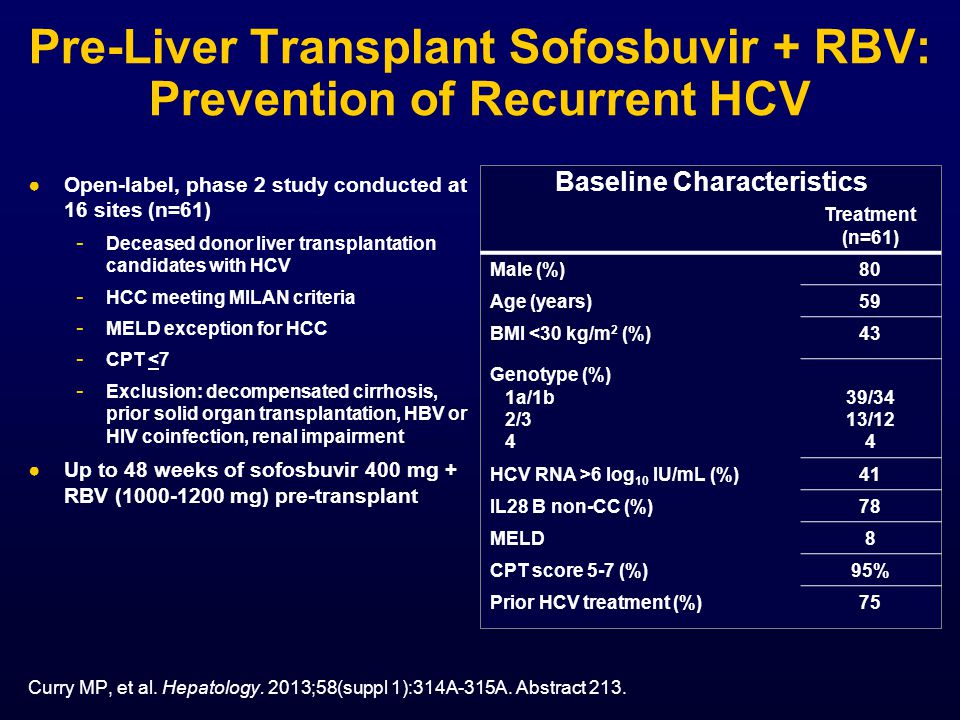 These tests may include other blood tests, an ultrasound of the liver, and a liver biopsy.
These tests may include other blood tests, an ultrasound of the liver, and a liver biopsy.
What are the treatments for hepatitis C?
Treatment for hepatitis C is with antiviral medicines. They can cure the disease in most cases.
If you have acute hepatitis C, your health care provider may wait to see if your infection becomes chronic before starting treatment.
If your hepatitis C causes cirrhosis, you should see a doctor who specializes in liver diseases. Treatments for health problems related to cirrhosis include medicines, surgery, and other medical procedures. If your hepatitis C leads to liver failure or liver cancer, you may need a liver transplant.
Can hepatitis C be prevented?
There is no vaccine for hepatitis C. But you can help protect yourself from hepatitis C infection by
- Not sharing drug needles or other drug materials
- Wearing gloves if you have to touch another person’s blood or open sores
- Making sure your tattoo artist or body piercer uses sterile tools and unopened ink
- Not sharing personal items such toothbrushes, razors, or nail clippers
- Using a latex condom during sex. If your or your partner is allergic to latex, you can use polyurethane condoms.
NIH: National Institute of Diabetes and Digestive and Kidney Diseases
Hepatitis C: Symptoms, causes, and treatments
Hepatitis C is a liver disease caused by the hepatitis C virus (HCV). It is the most common blood-borne viral infection in the United States.
Around 2.4 million people in the United States are living with a diagnosis of hepatitis C. However, many people with the infection do not know that they have it.
The hepatitis C virus (HCV) causes hepatitis C. It is contagious, and a person can transmit it to someone else through blood-to-blood contact.
The main complication of chronic hepatitis C is liver damage. This can include cirrhosis, liver failure, and liver cancer.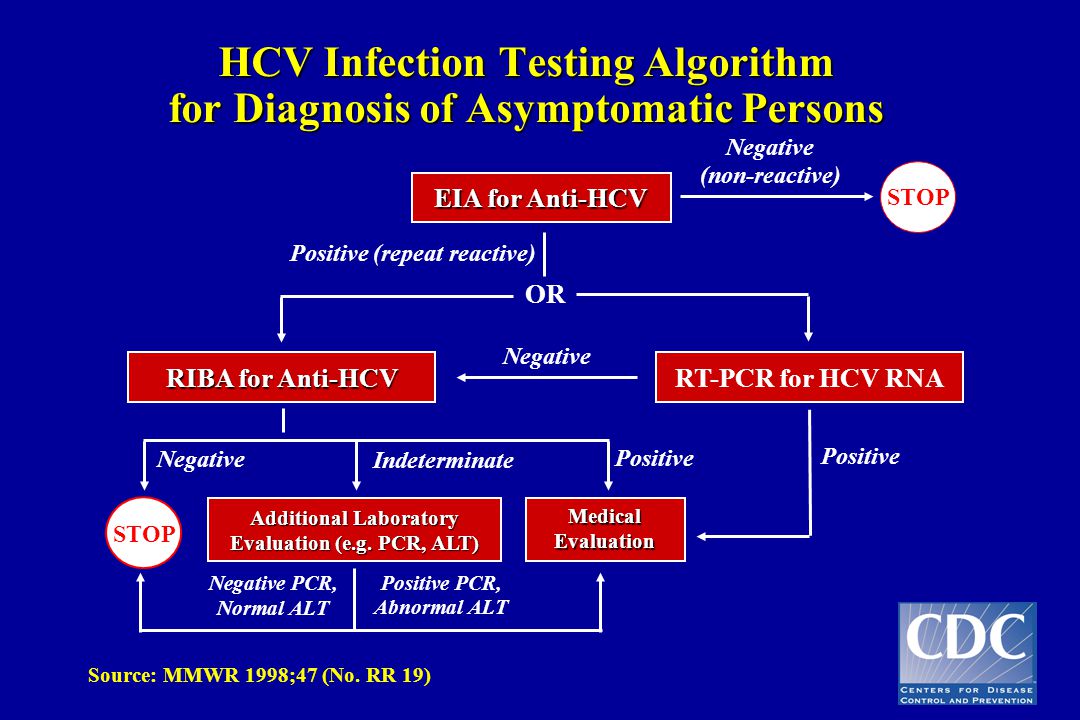 Early diagnosis can prevent liver damage. Left untreated, hepatitis C can be fatal.
Early diagnosis can prevent liver damage. Left untreated, hepatitis C can be fatal.
New medications can cure chronic hepatitis C, and some researchers believe the infection could become rare in the U.S. by the year 2036. There is no vaccine to prevent hepatitis C, but people can take steps to reduce their risk of infection.
This article provides an overview of acute and chronic hepatitis C, including their symptoms, causes, and treatments.
Share on PinterestEarly diagnosis of hepatitis C may lower a person’s risk of liver damage.
Generally speaking, hepatitis refers to an inflammation of the liver. Several viruses can cause hepatitis. The most common types are A, B, and C.
These viruses invade liver cells, causing swelling and dysfunction. Over time, inflammation in the liver tissue can damage the organ.
Hepatitis C infections can be acute (short-term) or chronic (long-lasting). When a person has acute hepatitis, symptoms can last for 6 months.
An acute infection becomes chronic if the body cannot clear the virus. This is common — acute infections become chronic in more than 50% of cases.
According to the Centers for Disease Control and Prevention (CDC), today, most new cases of hepatitis C occur from contact with needles or other equipment used to prepare or inject drugs. This is often from sharing needles or accidental contact in healthcare settings.
Hepatitis C can range from a mild illness that lasts for a few weeks to a severe and chronic health condition.
People can have hepatitis C with no symptoms, especially at the acute stage, and may not know they have it. This makes it easier to transmit to others.
Acute hepatitis C
Most people with acute hepatitis C do not develop symptoms. If they do, symptoms usually arise between 2 and 12 weeks after exposure.
People rarely receive a diagnosis of acute hepatitis C as it lacks definitive symptoms. Because of this, doctors often call hepatitis C the silent epidemic.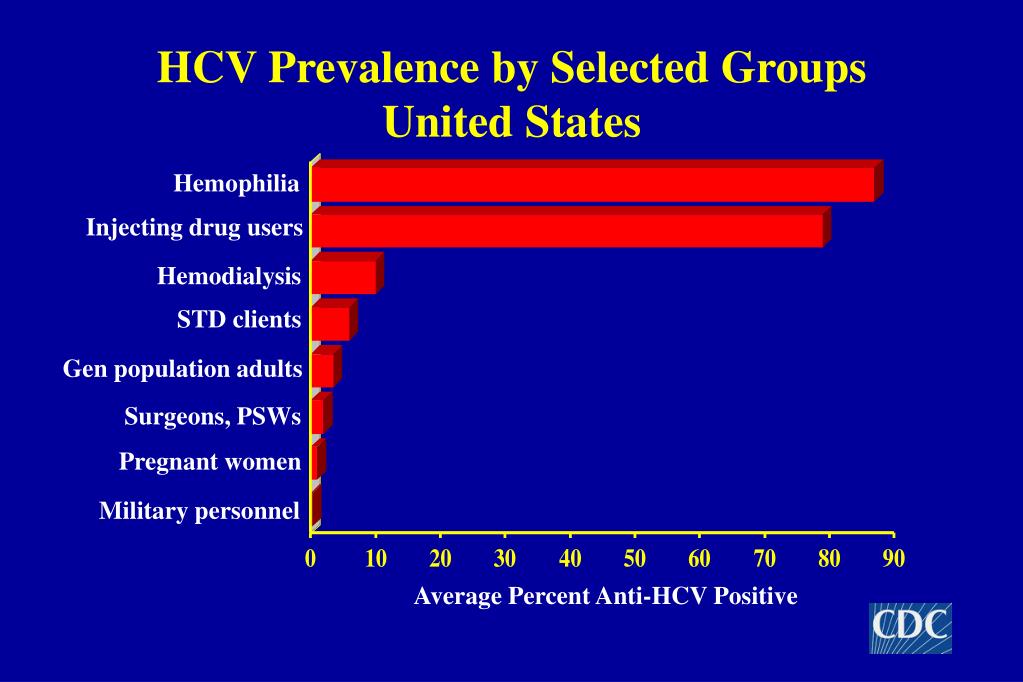
The acute symptoms are very similar to other viral infections. Symptoms of acute hepatitis C include:
According to CDC, less than half of people with acute hepatitis C clear the virus from their bodies without treatment and do not develop the chronic condition. Researchers do not know why this happens in some people and not others.
Chronic hepatitis C
Hepatitis C becomes chronic when the body cannot clear the virus.
In most cases, chronic hepatitis C does not cause any symptoms or causes general symptoms, such as chronic fatigue or depression. A person may only find out they have the condition during a routine blood test or screening for a blood donation.
Early diagnosis and treatment can prevent liver damage. Left untreated, chronic hepatitis C can lead to:
- chronic liver disease, which can happen slowly over several decades without any symptoms
- cirrhosis, or liver scarring, which occurs in up to 20% of people after 20–30 years
- liver failure
- liver cancer
THe HCV virus causes hepatitis C.
People contract the virus through blood-to-blood contact with contaminated blood. For transmission to occur, blood containing HCV must enter the body of a person without HCV.
A speck of blood, invisible to the naked eye, can carry hundreds of hepatitis C virus particles. The virus is not easy to kill.
The CDC offers advice on cleaning syringes if it is not possible to use clean and sterile ones. Although bleach might kill the HCV in syringes, it may not have the same effect on other equipment. Boiling, burning, and using alcohol, peroxide, or other common cleaning fluids to wash equipment may reduce the amount of HCV, but it might not stop a person contracting the infection.
It is extremely dangerous to inject bleach, disinfectant, or other cleaning products, so be sure to rinse the syringe thoroughly. Only ever use bleach to clean equipment if new, sterile syringes and equipment are not available.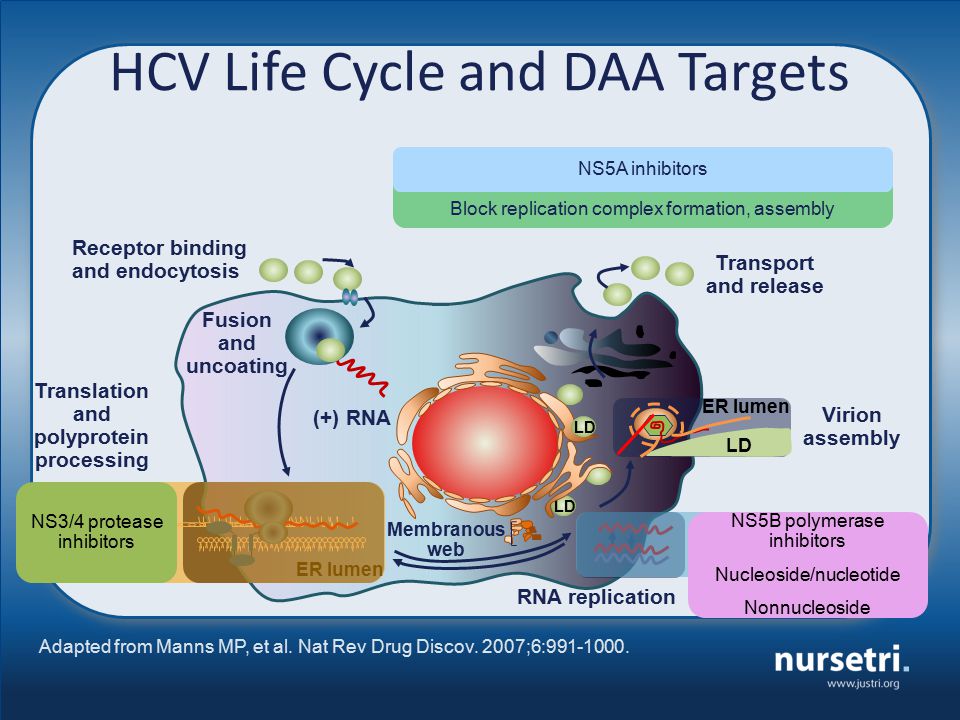
A person cannot contract the virus from casual contact, breathing, kissing, or sharing food. There is no evidence that mosquito bites can transfer the virus.
The CDC report the following risk factors for developing hepatitis C:
- using or having used injectable drugs, which is currently the most common route in the U.S.
- receiving transfusions or organ transplants before 1992, which is before blood screening became available
- exposure to a needle stick, which is most common in people who work in healthcare
- being born to a mother who has hepatitis C
Though the risk is low, people can also contract hepatitis C through:
- sexual contact without barrier protection, especially rough or anal sex, which makes blood-to-blood contact more likely
- sharing items that could have contact with blood, such as toothbrushes or razors
- invasive healthcare procedures, such as injections
- unregulated tattooing
People who are at risk due to these factors can receive a screening to rule out HCV.
Doctors can diagnose hepatitis C using blood tests:
- First, the doctor will perform a simple blood test to look for hepatitis C antibodies in the blood. A positive test means that the person has had exposure to the virus, but does not necessarily prove ongoing infection.
- If the antibody test is positive, the person may then have a second blood test called a hepatitis C RNA test. This will check whether the virus is still present in the blood.
- A third blood test — called a genotype test — can work out which type of hepatitis C virus is present, as there are at least six types.
If the person has had hepatitis C for a long time, a doctor may recommend further tests to look for liver damage, measure the severity of any existing damage, and rule out other causes of damage.
These tests usually involve blood tests and ultrasound scans. Doctors only use a liver biopsy — which involves taking a small sample of liver tissue — when the other tests do not provide enough information.
Modern treatments can cure hepatitis C in most cases. These treatments involve a combination of antiviral medications taken for 8 to 24 weeks.
Direct-acting antiviral medicines (DAAs) can cure most cases of chronic hepatitis C and acute hepatitis C. These are modern medicines approved in 2013. The medications are well-tolerated, with the most common side effects being a headache and fatigue.
These medications work by targeting specific steps in the HCV life cycle to disrupt the reproduction of viral cells.
DAAs to treat hepatitis C include:
- elbasvir/grazoprevir (Zepatier)
- glecaprevir and pibrentasvir (Mavyret)
- ledipasvir/sofosbuvir(Harvoni)
- peginterferon alfa-2a (Pegasys)
- sofosbuvir (Sovaldi)
The choice of medication and duration of treatment depends on the genotype of the virus. Genotype 1a is the most prevalent in the U.S.
Before DAAs became available, the treatment for chronic hepatitis C was lengthy and uncomfortable, with less than ideal cure rates. Now, the cure rates are over 90%.
However, new medications can be very costly. Most government and private health insurance prescription drug plans will help provide some coverage for these medications. Some drug companies and other programs can help, too.
Speak with a healthcare professional for advice on paying for hepatitis C treatment.
It is important to note that a person can get hepatitis C more than once. After successful treatment, the person should take steps to prevent another infection.
People can get vaccines to prevent hepatitis A and hepatitis B, but there is currently no vaccine for hepatitis C. To prevent infection, people must avoid exposure to the virus that causes it.
According to the CDC, the best way to prevent hepatitis C is to stop injecting. Using drug treatments such as methadone or buprenorphine reduce the risk because they do not involve injections.
If a person continues to inject, they can reduce their risk of hepatitis C by using a new needle each time they inject, never sharing needles with another person, and making sure the environment, injection site, and all equipment are clean and sterilized before injecting.
Obesity, smoking, diabetes, and alcohol consumption can accelerate the rate of liver scarring. It is important that all individuals with hepatitis C maintain good health. This involves:
The National Institute of Diabetes and Digestive and Kidney Diseases (NIDDK) recommend that people who have hepatitis C use the following methods to prevent transmitting it to others:
- avoiding sharing drug needles or other drug materials
- wearing gloves when touching another person’s open sores
- telling any tattooists or piercer that you have hepatitis C and making sure they use sterile tools and unopened ink
- avoiding sharing items such as toothbrushes, razors, and nail clippers
- telling any new sexual partners that you have hepatitis C and using barrier protection during sexual activity
Hepatitis C is the most common blood-borne viral infection in the U.S. and can cause fatal liver damage if left untreated. In 2016, the CDC reported at least 18,153 deaths related to hepatitis C.
However, improvements in education, risk-based screening, prevention methods, and modern treatments, the outlook for hepatitis C is better than ever.
Early diagnosis and treatment can significantly improve a person’s outlook and prevent liver damage. Modern medicines can cure hepatitis C in 90% of cases.
These treatments are expensive. If a person is at risk of exposure to the virus, they should have regular screenings to make sure they do not have the virus. Following prevention strategies correctly, can usually help a person avoid contracting the virus.
Read the article in Spanish here.
Hepatitis C | NIDDK
In this section:
What is hepatitis C?
Hepatitis C is a viral infection that causes liver inflammation and damage. Inflammation is swelling that occurs when tissues of the body become injured or infected. Inflammation can damage organs.
Viruses invade normal cells in your body. Many viruses cause infections that can be spread from person to person. The hepatitis C virus spreads through contact with an infected person’s blood.
Many viruses cause infections that can be spread from person to person. The hepatitis C virus spreads through contact with an infected person’s blood.
Hepatitis C can cause an acute or chronic infection.
Although no vaccine for hepatitis C is available, you can take steps to protect yourself from hepatitis C. If you have hepatitis C, talk with your doctor about treatment. Medicines can cure most cases of hepatitis C.
Acute hepatitis C
Acute hepatitis C is a short-term infection. Symptoms can last up to 6 months. Sometimes your body is able to fight off the infection and the virus goes away.
Chronic hepatitis C
Chronic hepatitis C is a long-lasting infection. Chronic hepatitis C occurs when your body isn’t able to fight off the virus. About 75 to 85 percent of people with acute hepatitis C will develop chronic hepatitis C.13
Early diagnosis and treatment of chronic hepatitis C can prevent liver damage. Without treatment, chronic hepatitis C can cause chronic liver disease, cirrhosis, liver failure, or liver cancer.
How common is hepatitis C in the United States?
In the United States, hepatitis C is the most common chronic viral infection found in blood and spread through contact with blood.14
Researchers estimate that about 2.7 million to 3.9 million people in the United States have chronic hepatitis C.13 Many people who have hepatitis C don’t have symptoms and don’t know they have this infection.
Since 2006, the number of new hepatitis C infections has been rising, especially among people younger than age 30 who inject heroin or misuse prescription opioids and inject them.15,16
New screening efforts and more effective hepatitis C treatments are helping doctors identify and cure more people with the disease. With more screening and treatment, hepatitis C may become less common in the future. Researchers estimate that hepatitis C could be a rare disease in the United States by 2036. 17
17
Who is more likely to get hepatitis C?
People more likely to get hepatitis C are those who
- have injected drugs
- had a blood transfusion or organ transplant before July 1992
- have hemophilia and received clotting factor before 1987
- have been on kidney dialysis
- have been in contact with blood or infected needles at work
- have had tattoos or body piercings
- have worked or lived in a prison
- were born to a mother with hepatitis C
- are infected with HIV
- have had more than one sex partner in the last 6 months or have a history of sexually transmitted disease
- are men who have or had sex with men
In the United States, injecting drugs is the most common way that people get hepatitis C.13
Should I be screened for hepatitis C?
Doctors usually recommend one-time screening of all adults ages 18 to 79 for hepatitis C. Screening is testing for a disease in people who have no symptoms. Doctors use blood tests to screen for hepatitis C. Many people who have hepatitis C don’t have symptoms and don’t know they have hepatitis C. Screening tests can help doctors diagnose and treat hepatitis C before it causes serious health problems.
Doctors usually recommend one-time screening of all adults ages 18 to 79 for hepatitis C.
What are the complications of hepatitis C?
Without treatment, hepatitis C may lead to cirrhosis, liver failure, and liver cancer. Early diagnosis and treatment of hepatitis C can prevent these complications.
Cirrhosis
Cirrhosis is a condition in which the liver slowly breaks down and is unable to function normally. Scar tissue replaces healthy liver tissue and partially blocks the flow of blood through the liver. In the early stages of cirrhosis, the liver continues to function. However, as cirrhosis gets worse, the liver begins to fail.
Liver failure
Also called end-stage liver disease, liver failure progresses over months, years, or even decades. With end-stage liver disease, the liver can no longer perform important functions or replace damaged cells.
Liver cancer
Having chronic hepatitis C increases your chance of developing liver cancer. If chronic hepatitis C causes severe liver damage or cirrhosis before you receive hepatitis C treatment, you will continue to have an increased chance of liver cancer even after treatment. Your doctor may suggest blood tests and an ultrasound or another type of imaging test to check for liver cancer. Finding cancer at an early stage improves the chance of curing the cancer.
What are the symptoms of hepatitis C?
Most people infected with hepatitis C have no symptoms. Some people with an acute hepatitis C infection may have symptoms within 1 to 3 months after they are exposed to the virus. These symptoms may include
If you have chronic hepatitis C, you most likely will have no symptoms until complications develop, which could be decades after you were infected. For this reason, hepatitis C screening is important, even if you have no symptoms.
What causes hepatitis C?
The hepatitis C virus causes hepatitis C. The hepatitis C virus spreads through contact with an infected person’s blood. Contact can occur by
- sharing drug needles or other drug materials with an infected person
- getting an accidental stick with a needle that was used on an infected person
- being tattooed or pierced with tools or inks that were not kept sterile—free from all viruses and other microorganisms—and were used on an infected person before they were used on you
- having contact with the blood or open sores of an infected person
- using an infected person’s razor, toothbrush, or nail clippers
- being born to a mother with hepatitis C
- having unprotected sex with an infected person
You can’t get hepatitis C from
- being coughed or sneezed on by an infected person
- drinking water or eating food
- hugging an infected person
- shaking hands or holding hands with an infected person
- sharing spoons, forks, and other eating utensils
- sitting next to an infected person
A baby can’t get hepatitis C from breast milk.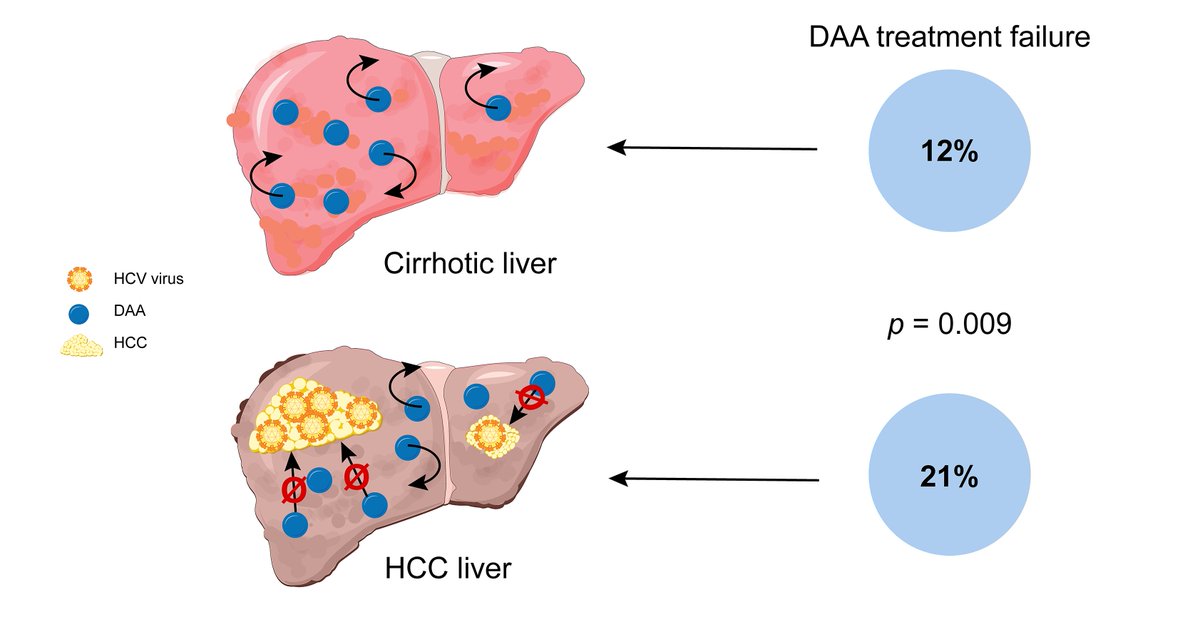 18
18
How do doctors diagnose hepatitis C?
Doctors diagnose hepatitis C based on your medical history, a physical exam, and blood tests. If you have hepatitis C, your doctor may perform additional tests to check your liver.
Medical history
Your doctor will ask about your symptoms and whether you have any history of blood transfusions or injected drug use.
Physical exam
During a physical exam, your doctor will typically examine your body to check for signs of liver damage such as
- changes in skin color
- swelling in your lower legs, feet, or ankles
- tenderness or swelling in your abdomen
What tests do doctors use to diagnose hepatitis C?
Doctors use blood tests to diagnose hepatitis C. Your doctor may order additional tests to check for liver damage, find out how much liver damage you have, or rule out other causes of liver disease.
Blood tests
Your doctor may order one or more blood tests to diagnose hepatitis C. A health care professional will take a blood sample from you and send the sample to a lab.
Blood tests for hepatitis C include the following:
- Screening test for antibodies to the hepatitis C virus. A screening blood test will show whether you have developed antibodies to the hepatitis C virus. A positive antibody test means you were exposed to the hepatitis C virus at some point. However, the virus may no longer be present in your blood if your body fought off the infection on its own or if you received treatment that cured the infection.
- Hepatitis C RNA test. If your antibody test is positive, your doctor will use a hepatitis C RNA test to detect RNA—a type of genetic material—from the hepatitis C virus. The hepatitis C RNA test can show whether you still have the hepatitis C virus and how much virus is in your blood. This information can help your doctor treat the infection.
 To see if you are responding to treatment, your doctor may order this test while you are undergoing treatment to find out if the amount of virus in your blood is changing.
To see if you are responding to treatment, your doctor may order this test while you are undergoing treatment to find out if the amount of virus in your blood is changing. - Genotype test. Your doctor can use this test to find out what strain, or form, of hepatitis C virus you have. At least six specific strains—called genotypes—of hepatitis C exist. Genotype 1 is the most common hepatitis C genotype in the United States.1 Your doctor will recommend treatment based on which hepatitis C genotype you have.
Your doctor may order one or more blood tests to diagnose hepatitis C.
Additional tests
If you’ve had chronic hepatitis C for a long time, you could have liver damage. Your doctor may recommend additional tests to find out whether you have liver damage, how much liver damage you have, or to rule out other causes of liver disease. These tests may include
- blood tests
- transient elastography, a special ultrasound of your liver
- liver biopsy, in which a doctor uses a needle to take a small piece of tissue from your liver
Doctors typically use liver biopsy only if other tests don’t provide enough information about a person’s liver damage or disease. Talk with your doctor about which tests are best for you.
How do doctors treat hepatitis C?
Doctors treat hepatitis C with antiviral medicines that attack the virus and can cure the disease in most cases.
Several newer medicines, called direct-acting antiviral medicines, have been approved to treat hepatitis C since 2013. Studies show that these medicines can cure chronic hepatitis C in most people with this disease. These medicines can also cure acute hepatitis C. In some cases, doctors recommend waiting to see if an acute infection becomes chronic before starting treatment.
Your doctor may prescribe one or more of these newer, direct-acting antiviral medicines to treat hepatitis C:
Newer medicines are sometimes used along with these older hepatitis C medicines:
Doctors treat hepatitis C with antiviral medicines that attack the virus.
You may need to take medicines for 8 to 24 weeks to cure hepatitis C. Your doctor will prescribe medicines and recommend a length of treatment based on
- which hepatitis C genotype you have
- how much liver damage you have
- whether you have been treated for hepatitis C in the past
Your doctor may order blood tests during and after your treatment. Blood tests can show whether the treatment is working. Hepatitis C medicines cure the infection in most people who complete treatment.
Hepatitis C medicines may cause side effects. Talk with your doctor about the side effects of treatment. Check with your doctor before taking any other prescription or over-the-counter medicines.
For safety reasons, talk with your doctor before using dietary supplements, such as vitamins, or any complementary or alternative medicines or medical practices.
Cost of hepatitis C medicines
The newer direct-acting antiviral medicines for hepatitis C can be costly. Most government and private health insurance prescription drug plans provide some coverage for these medicines. Talk with your doctor about your health insurance coverage for hepatitis C medicines.
Drug companies, nonprofit organizations, and some states offer programs that can help pay for hepatitis C medicines. If you need help paying for medicines, talk with your doctor. Learn more about financial help for hepatitis C medicines.
How do doctors treat the complications of hepatitis C?
If hepatitis C leads to cirrhosis, you should see a doctor who specializes in liver diseases. Doctors can treat the health problems related to cirrhosis with medicines, surgery, and other medical procedures. If you have cirrhosis, you have an increased chance of liver cancer. Your doctor may order an ultrasound test to check for liver cancer.
If hepatitis C leads to liver failure or liver cancer, you may need a liver transplant.
How can I protect myself from hepatitis C infection?
If you don’t have hepatitis C, you can help protect yourself from hepatitis C infection by
- not sharing drug needles or other drug materials
- wearing gloves if you have to touch another person’s blood or open sores
- making sure your tattoo artist or body piercer uses sterile tools and unopened ink
- not sharing personal items such toothbrushes, razors, or nail clippers
Hepatitis C can spread from person to person during sex, but the chances are low.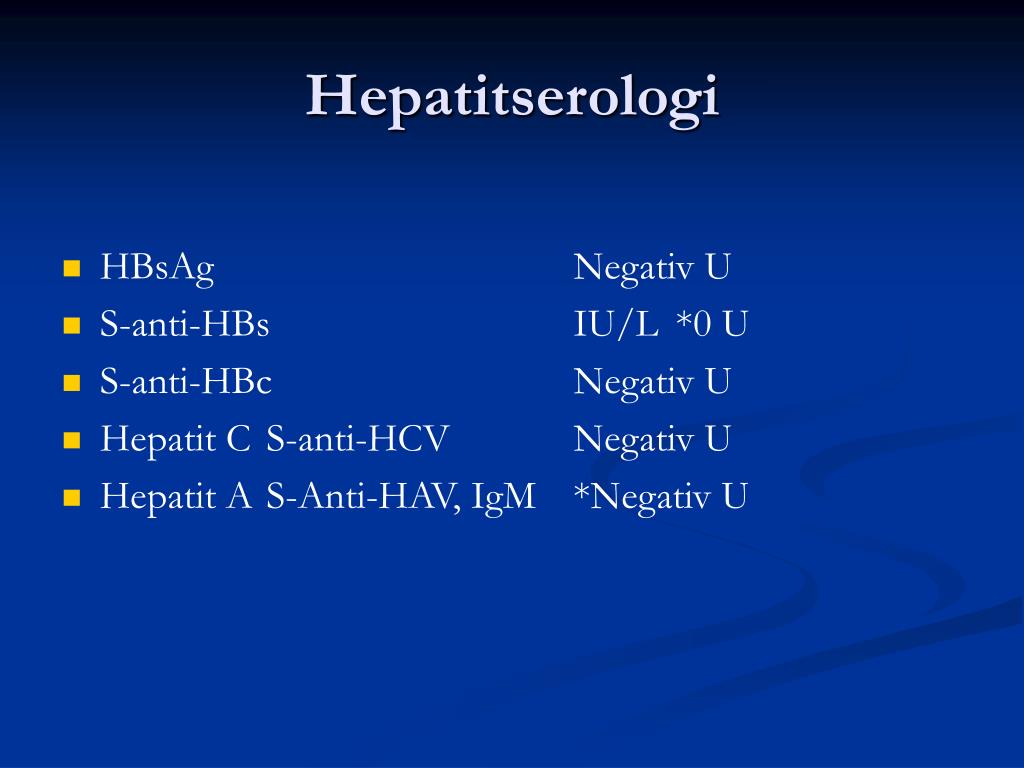 People who have multiple sex partners, have HIV or other sexually transmitted diseases, or who engage in rough or anal sex have a higher chance of getting hepatitis C. Talk with your doctor about your risk of getting hepatitis C through sex and about safe sex practices, such as using a latex or polyurethane condom to help prevent the spread of hepatitis C.
People who have multiple sex partners, have HIV or other sexually transmitted diseases, or who engage in rough or anal sex have a higher chance of getting hepatitis C. Talk with your doctor about your risk of getting hepatitis C through sex and about safe sex practices, such as using a latex or polyurethane condom to help prevent the spread of hepatitis C.
Do not share drug needles or other drug materials.
If you had hepatitis C in the past and your body fought off the infection or medicines cured the infection, you can get hepatitis C again. Follow the steps above, and talk with your doctor about how to protect yourself from another hepatitis C infection.
If you think you may have been exposed to the hepatitis C virus, see your doctor as soon as possible. Early diagnosis and treatment can help prevent liver damage.
How can I prevent spreading hepatitis C to others?
If you have hepatitis C, follow the steps above to avoid spreading the infection. Tell your sex partner you have hepatitis C, and talk with your doctor about safe sex practices. In addition, you can protect others from infection by telling your doctor, dentist, and other health care providers that you have hepatitis C. Don’t donate blood or blood products, semen, organs, or tissue.
Is a hepatitis C vaccine available?
Researchers are still working on a vaccine for hepatitis C. If you have hepatitis C, talk with your doctor about vaccines for hepatitis A and hepatitis B. These vaccines can protect you from hepatitis A and hepatitis B infections, which could further damage your liver.
What should I eat and drink if I have hepatitis C?
If you have hepatitis C, you should eat a balanced, healthy diet. Talk with your doctor about healthy eating. You should also avoid alcohol because it can cause more liver damage.
References
[13] Hepatitis C FAQs for health professionals. Centers for Disease Control and Prevention, Division of Viral Hepatitis website.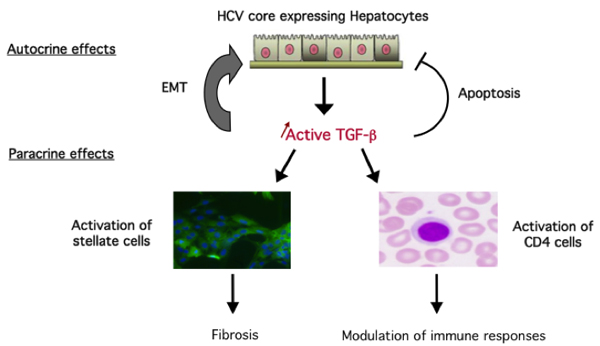 www.cdc.gov/hepatitis/HCV/HCVfaq.htm. Updated July 21, 2016. Accessed October 19, 2016.
www.cdc.gov/hepatitis/HCV/HCVfaq.htm. Updated July 21, 2016. Accessed October 19, 2016.
[14] U.S. Preventive Services Task Force. Final recommendation statement: hepatitis C virus infection in adolescents and adults: screening. www.uspreventiveservicestaskforce.org/Page/Document/RecommendationStatementFinal/hepatitis-c-screening1. Current as of March 2020. Accessed March 2, 2020.
[15] Suryaprasad AG, White JZ, Xu F, et al. Emerging epidemic of hepatitis C virus infections among young nonurban persons who inject drugs in the United States, 2006–2012. Clinical Infectious Diseases. 2014;59(10):1411–1419.
[16] Viral hepatitis and young persons who inject prescription opioids and heroin. Centers for Disease Control and Prevention website. www.cdc.gov/hepatitis/featuredtopics/youngpwid.htm. Updated March 30, 2016. Accessed October 19, 2016.
[17] Kabiri M, Jazwinski AB, Roberts MS, Schaefer AJ, Chhatwal J. The changing burden of hepatitis C virus infection in the United States: model-based predictions. Annals of Internal Medicine. 2014;161(3):170–180.
[18] Hepatitis B and C infections. Centers for Disease Control and Prevention, Division of Nutrition, Physical Activity, and Obesity website. www.cdc.gov/breastfeeding/disease/hepatitis.htm. Updated June 17, 2015. Accessed October 19, 2016.
Hepatitis C – Disease Prevention and Control, San Francisco Department of Public Health
What is Hepatitis C?
Hepatitis C is a contagious liver infection caused by the hepatitis C virus (HCV).
The hepatitis C virus was discovered in 1989. Prior to that, it was associated with blood transfusions, but was called non-A, non-B hepatitis because the virus could not be identified. It is now known that there are several genetic types (genotypes) of the hepatitis C virus.
The natural course of hepatitis C disease varies from one person to another.
- The first phase of disease is called acute hepatitis C and covers the first 6 months after a person is infected.
 During this phase, most people show no symptoms at all. Among those who do have symptoms, the illness is usually so mild that most don’t even recognize that they have liver disease.
During this phase, most people show no symptoms at all. Among those who do have symptoms, the illness is usually so mild that most don’t even recognize that they have liver disease. - In 15-40% of persons with acute hepatitis C, the immune system successfully fights off the infection, the virus is cleared from the body within 6 months, and the liver heals completely. In everyone else, the immune system cannot clear the virus, and hepatitis C infection persists past 6 months (usually for the rest of the person’s life). This persistent state is known as chronic hepatitis C.
- In chronic hepatitis C, the liver becomes more and more inflamed and scarred over a period of years. However, the speed at which inflammation and scarring take place varies between people. About 1/3 develop severe liver scarring and the liver stops functioning normally (cirrhosis) within 20 years. Another 1/3 take 30 years for cirrhosis to occur. In the remaining 1/3, liver disease progresses slowly and does not become a major problem during their lifetime.
Hepatitis C can be treated and cured. Almost everyone living with HCV can now be cured with a one-pill-a-day regimen in eight-to-twelve weeks. These new medications are generally well-tolerated. In order to access HCV treatment, it is necessary to see your doctor to discuss treatment options. Access to treatment continues to improve as new medication regimens are made available by private health insurers and public health programs like the VA Medical Centers, the AIDS Drug Assistance Program, Medicaid, and MediCal.
How do People Get Hepatitis C?
Hepatitis C virus is found in the blood of people with HCV infection. It enters the body through blood-to-blood contact.
Until reliable blood tests for HCV were developed (around 1992), people usually got hepatitis C from blood products and blood transfusions. Now that blood and blood products are tested for HCV, this is no longer the typical means of infection.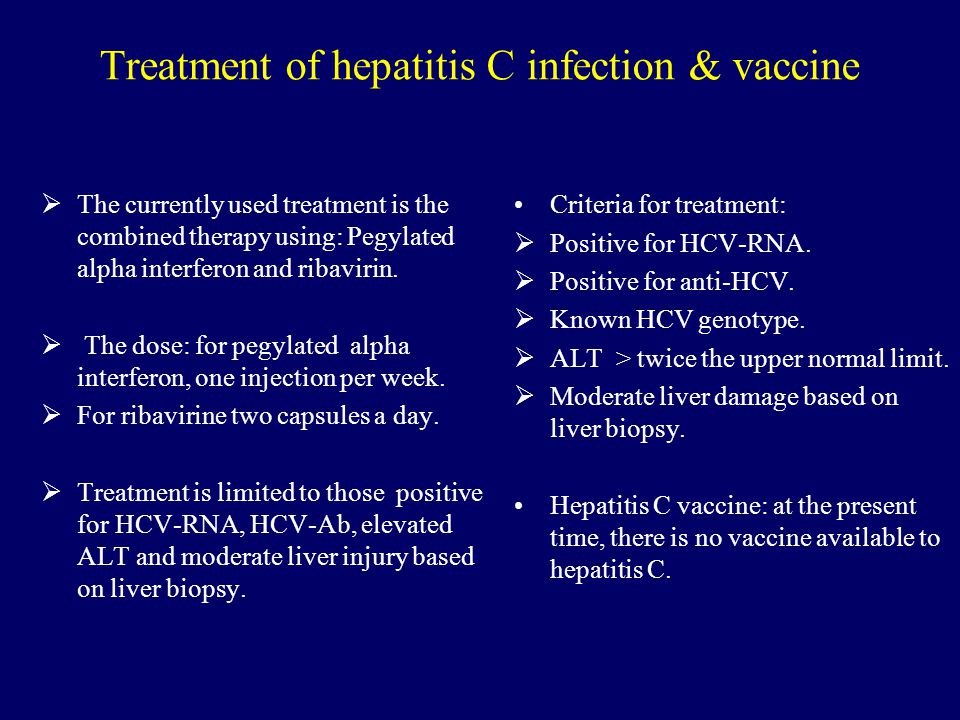
Currently, people usually get hepatitis C by sharing needles for injection drug use. An HCV-infected woman can pass the infection to her baby during birth. It is also possible to get hepatitis C from an infected person through sexual contact, an accidental needlestick with a contaminated needle, or improperly sterilized medical, acupuncture, piercing, or tattooing equipment.
Who is at Risk for Infection?
- People who inject drugs
- Hemodialysis patients
- Recipients of blood transfusions, blood products, or solid organ transplants before 1992
- Infants born to infected mothers
- Health care and public safety workers who may have contact with blood
- People having sex with an infected partner
How is Hepatitis C Infection Prevented?
Unfortunately, there is no vaccine to prevent hepatitis C. To reduce your risk of getting hepatitis C:
- Injection drug use is the most common way people get hepatitis C. Avoid injecting drugs to reduce your risk. If you do inject drugs, use sterile injection equipment. Avoid reusing or sharing.
- Avoid sharing personal care items that might have blood on them (razors, toothbrushes, nail clippers)
- If you are a health care or public safety worker, follow universal blood/body fluid precautions and safely handle needles and other sharps
- Consider the risks if you are thinking about tattooing, body piercing, or acupuncture – are the instruments properly sterilized?
- If you’re having sex with more than one partner, use latex condoms correctly and every time to prevent the spread of sexually transmitted diseases, including hepatitis C.
What are the Symptoms of Hepatitis C?
During the acute phase (first 6 months after infection) most persons have no symptoms or might experience a mild illness. Symptoms of acute HCV infection, when present, may include:
- Jaundice (yellowing of the skin and eyes)
- Dark-colored urine, light-colored stools
- Fatigue
- Abdominal pain
- Loss of appetite
- Nausea
- Diarrhea
- Fever
During the chronic phase (> 6 months after infection) hepatitis C usually progresses silently, with no symptoms at all during the first 10-20 years. Signs of severe liver scarring (cirrhosis) may include:
Signs of severe liver scarring (cirrhosis) may include:
- Ascites (accumulation of fluid and swelling of the abdominal cavity)
- Star-shaped vein pattern developing on the swollen belly
- Jaundice
- Itching
- Easy bruising and bleeding
Because symptoms of hepatitis C are usually absent, persons with risk for HCV infection should be tested. The blood test for hepatitis C infection is called the “hepatitis C antibody test.” People who have hepatitis C infection will show positive antibodies on this test. In many cases, it is necessary to confirm a positive hepatitis C antibody test with a more specific test, such as a test for HCV virus RNA.
If you think you have hepatitis C or have risk for hepatitis C, you should contact your doctor. The Communicable Disease Control Unit (415-554-2830) may be able to help answer your questions.
Additional Information
90,000 WHO | What is hepatitis?
Question: What is hepatitis?
Answer: Hepatitis is an inflammation of the liver. The condition can be self-limiting or lead to the development of fibrosis (scarring), cirrhosis, or liver cancer. The most common pathogens of hepatitis in the world are hepatitis viruses, but other infections, toxic substances (such as alcohol and certain drugs) and autoimmune diseases can also cause it.
There are 5 main hepatitis viruses, called types A, B, C, D and E. These 5 types pose a huge challenge in terms of the burden of disease and death they cause and their potential to cause outbreaks and epidemic spread. … In particular, types B and C cause chronic disease in hundreds of millions of people and, together, are the most common causes of cirrhosis and liver cancer.
Hepatitis A and E are usually caused by eating contaminated food or water.Hepatitis B, C, and D usually result from parenteral contact with infected body fluids. Common modes of transmission of these viruses include transfusion of contaminated blood or blood products, invasive medical procedures using contaminated equipment, and, for hepatitis B, transmission from mother to child during childbirth, family member to child, and sexual intercourse.
Common modes of transmission of these viruses include transfusion of contaminated blood or blood products, invasive medical procedures using contaminated equipment, and, for hepatitis B, transmission from mother to child during childbirth, family member to child, and sexual intercourse.
An acute infection may be symptomatic or asymptomatic, or may include symptoms such as jaundice (yellowing of the skin and eyes), dark urine, excessive fatigue, nausea, vomiting, and abdominal pain.
Question: What are the different hepatitis viruses?
Answer: Scientists have identified 5 separate hepatitis viruses, identified by the letters A, B, C, D and E. All of them lead to the development of liver disease, but there are significant differences between them.
Hepatitis A Virus (HAV) is present in the faeces of infected people and is most commonly transmitted through the consumption of contaminated food or water.HAV can also be spread in certain types of sexual relationships. In many cases, infections are mild, most people recover completely and remain immune to subsequent HAV infections. However, HAV infections can be severe and life-threatening. Most people in poorly sanitized areas of the world are infected with this virus. Safe and effective vaccines are available to prevent HAV.
Hepatitis B virus (HBV) is transmitted by contact with infected blood, semen and other body fluids.HBV can be passed from an infected mother to her baby during childbirth, or from a family member to a young child. Transmission of infection can also occur through transfusion of blood and blood products contaminated with HBV, injection with contaminated equipment during medical procedures, and injecting drug use. HBV also poses a hazard to healthcare workers who suffer needle stick injuries while caring for HBV-infected patients. There is a safe and effective vaccine to prevent HBV.
Hepatitis C virus (HCV) is also mainly transmitted by contact with infected blood.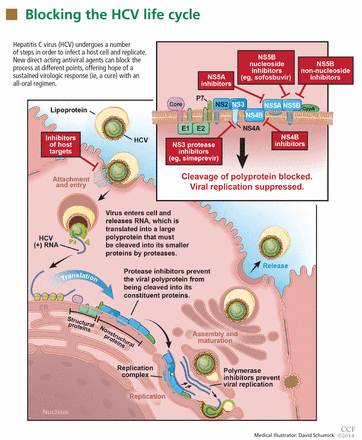 This can occur through transfusion of HCV-contaminated blood and blood products, injection with contaminated equipment during medical procedures, and injecting drug use. Sexual transmission is also possible, but this happens much less frequently. There is no vaccine against HCV.
This can occur through transfusion of HCV-contaminated blood and blood products, injection with contaminated equipment during medical procedures, and injecting drug use. Sexual transmission is also possible, but this happens much less frequently. There is no vaccine against HCV.
Hepatitis D Virus (HDV) can only infect people who are infected with HBV.Double infection with HDV and HBV can lead to more serious illness and worse outcome. Safe and effective hepatitis B vaccines provide protection against HDV infection.
Hepatitis E Virus (HEV) , like HAV, is transmitted in most cases through the consumption of contaminated food or water. HEV often leads to outbreaks of hepatitis in developing parts of the world and is increasingly recognized as a significant cause of disease in developing countries.Safe and effective vaccines have been developed to prevent HEV infection but are not widely available.
Hepatitis B
Mother-to-child transmission is more common when the HBV-infected mother has a high viral load. In the absence of preventive measures, mothers with HBeAg-positive viral hepatitis (i.e., usually with a higher viral load) have a risk of transmitting the infection to their child between 70% and 90%.
Hepatitis B is also spread through needle sticking, tattooing, body piercing, and contact with infected blood and body fluids, including saliva, menstrual and vaginal secretions, and semen.Hepatitis B infection can occur sexually, particularly in unvaccinated men who have sex with men and heterosexual people who have multiple sexual partners or have sex with sex workers.
Chronic hepatitis B develops in less than 5% of those infected in adulthood and in about 95% of those infected in infancy and early childhood. Infection can also occur through the reuse of needles and syringes in health care settings and among people who inject drugs.In addition, the virus can be transmitted through medical, surgical and dental procedures, tattooing, and the use of razor blades and similar devices that are contaminated with infected blood.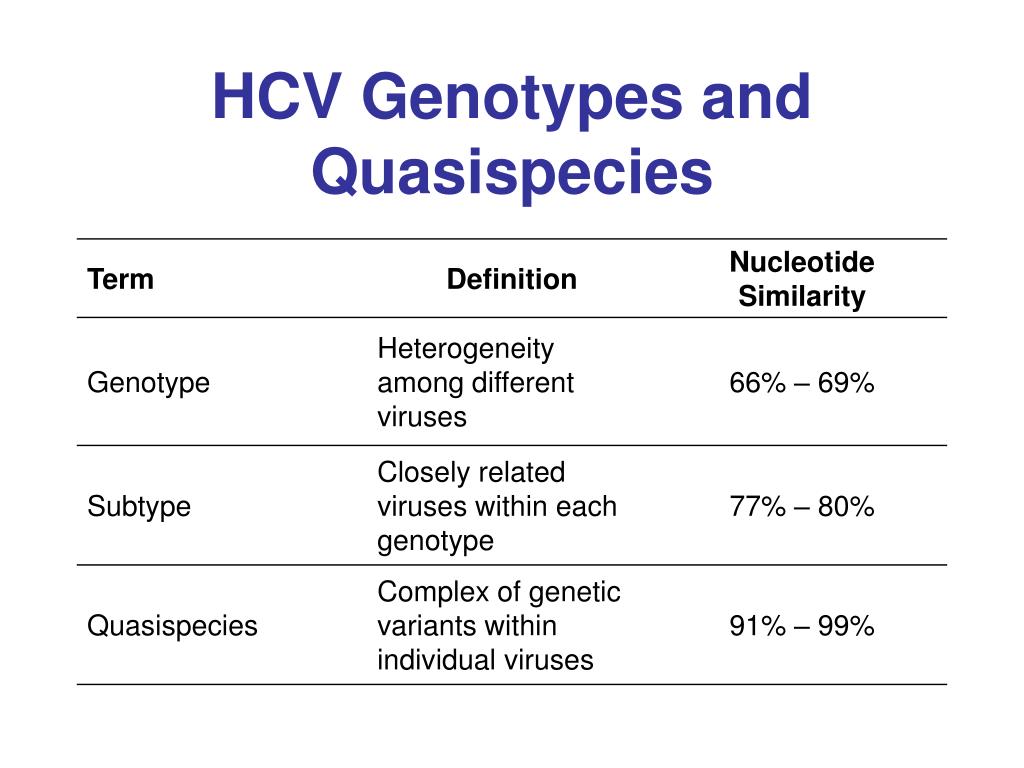
The hepatitis B virus is able to survive outside the human body for at least seven days. During this period of time, the virus retains the ability to cause infection if it enters the body of an unvaccinated person. The duration of the incubation period for hepatitis B ranges from 30 to 180 days and averages 75 days.The virus can be found in the blood for 30-60 days after infection and can persist in the body, causing chronic hepatitis B.
Symptoms
In most cases, the primary infection is asymptomatic. However, some patients develop acute symptoms with severe symptoms that persist for several weeks and include icteric discoloration of the skin and sclera, dark urine, severe weakness, nausea, vomiting, and abdominal pain.In rare cases, acute hepatitis can lead to the development of acute liver failure with a risk of death.
The hepatitis B virus can also cause chronic liver infection, which over time can develop into cirrhosis (scarring of the liver) or liver cancer.
Who is at risk of developing chronic hepatitis B?
The likelihood of developing a chronic infection depends on the age at which a person contracted the hepatitis virus.Chronic infection is most likely to develop in children under six years of age who are infected with the hepatitis B virus.
Infants and young children:
- In infants infected in the first year of life, chronic infection develops in 80–90% of cases;
- in children infected before the age of six years, chronic infection develops in 30-50% of cases.
Adults:
- in adults infected with hepatitis B, in the absence of other comorbidities, chronic infection develops in less than 5% of cases; and
- if chronic infection develops in 20–30% of adults, the disease leads to cirrhosis and / or liver cancer.
HIV-HBV co-infection
About 1% of people living with HBV infection (2.7 million people) are also infected with HIV. At the same time, the average prevalence of HBV infection among HIV-infected is 7.4%. Since 2015, WHO has recommended prescribing treatment for all patients diagnosed with HIV infection, regardless of the stage of the disease. Tenofovir, which is part of the recommended first-line treatment combination for HIV infection, is also active against HBV.
At the same time, the average prevalence of HBV infection among HIV-infected is 7.4%. Since 2015, WHO has recommended prescribing treatment for all patients diagnosed with HIV infection, regardless of the stage of the disease. Tenofovir, which is part of the recommended first-line treatment combination for HIV infection, is also active against HBV.
Diagnosis
It is not possible to differentiate between hepatitis B and other types of viral hepatitis on the basis of clinical presentation alone; therefore, laboratory confirmation of the diagnosis is extremely important. Several laboratory blood tests are available to diagnose and monitor patients with hepatitis B. They can be used to differentiate between acute and chronic infections.
Methods of laboratory diagnosis of infection are to identify the surface antigen of hepatitis B (HbsAg).To ensure blood safety and prevent accidental transmission of the virus to recipients of blood products, WHO recommends systematic testing of donated blood for hepatitis B.
- Acute HBV infection is characterized by the presence of hepatitis B virus surface antigen (HBsAg) and immunoglobulins M (IgM) – antibodies to the nuclear antigen (HBcAg). During the initial phase of infection, hepatitis B virus e antigen (HbeAg) is also found in patients. HBeAg is usually a marker for high viral replication.The presence of HBeAg indicates a high contagiousness of the blood and body fluids of the infected person.
- Chronic infection is characterized by persistence of HBsAg for at least six months (with or without HBeAg). The persistent presence of HBsAg is a major marker of lifetime risk of chronic liver disease and liver cancer (hepatocellular carcinoma).
Treatment
There is no specific treatment for acute hepatitis B.Therefore, medical attention is focused on maintaining physical comfort and proper nutritional balance, including replenishing fluid losses caused by vomiting and diarrhea.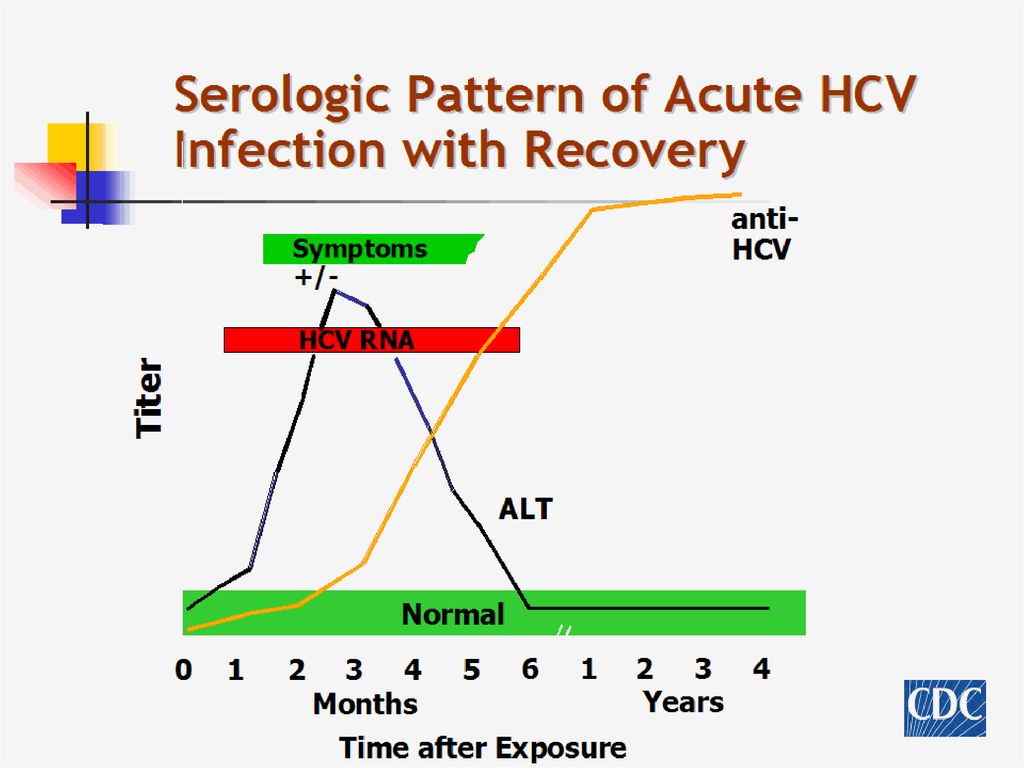 It is very important to avoid unnecessary medication. Thus, acetaminophen / paracetamol and antiemetics are not indicated for patients with acute hepatitis B.
It is very important to avoid unnecessary medication. Thus, acetaminophen / paracetamol and antiemetics are not indicated for patients with acute hepatitis B.
With chronic hepatitis B, medication can be prescribed, including oral antiviral drugs. Treatment can slow the progression of liver cirrhosis, reduce the incidence of liver cancer, and increase the long-term survival rate of patients.At the same time, drug treatment is required only for a part of patients with chronic hepatitis B (according to estimates, from 10% to 40% of patients, depending on the conditions and selection criteria).
WHO recommends the use of oral drugs tenofovir and entecavir, which are most effective in suppressing the hepatitis B virus. there is no need for careful monitoring of patients.
Entecavir is not a patented drug. In 2017, all low- and middle-income countries were legally able to purchase generic entecavir, but the cost and availability varied significantly. Tenofovir is no longer protected by a patent in any country in the world. By 2016, the median price of WHO-prequalified generic tenofovir in the international market dropped from US $ 208 to US $ 32 per year of treatment.
At the same time, in most cases, drug treatment does not allow achieving a complete cure for hepatitis B, but only suppresses the replication of the virus.Therefore, most patients who start treatment for hepatitis B should continue it throughout their lives.
In many resource-limited regions, access to diagnosis and treatment of hepatitis B remains difficult. In 2016, of the more than 250 million people living with HBV, 10.5% (27 million people) knew their diagnosis. The global average treatment coverage of diagnosed persons was 16.7% (4.5 million people). Many patients are diagnosed with advanced liver disease.
Among the chronic complications of hepatitis B, cirrhosis and hepatocellular carcinoma account for a large share of the disease burden. Liver cancer progresses rapidly and, given the limited treatment options available, the outcome is generally poor. In low-income countries, most patients with liver cancer die within a few months of being diagnosed. In high-income countries, the lives of these patients can be extended by several years through surgery and chemotherapy.In high-income countries, liver transplants are performed in some patients with cirrhosis, but these have been performed with varying success.
In low-income countries, most patients with liver cancer die within a few months of being diagnosed. In high-income countries, the lives of these patients can be extended by several years through surgery and chemotherapy.In high-income countries, liver transplants are performed in some patients with cirrhosis, but these have been performed with varying success.
Prevention
Vaccination is the main method of preventing hepatitis B infection. WHO recommends that all newborns be vaccinated against hepatitis B as soon as possible after birth, if possible in the first 24 hours of life, followed by two or three doses of the vaccine at least four weeks apart. Immediately after birth, vaccinating babies on time is an effective way to reduce mother-to-child transmission of hepatitis B.
According to the latest WHO estimates, the proportion of children under five years of age with chronic hepatitis B fell to just under 1% in 2019, while in the decades leading up to vaccination (i.e., from the 1980s to the early 2000s) x years), this figure was about 5%.
One of the Sustainable Development Goal elimination targets for viral hepatitis has been achieved by 2020 to reduce the prevalence of HBV infection in children under 5 years of age to less than 1%.
The expansion of hepatitis B vaccination coverage globally over the past two decades has been a major health advancement and has contributed to a decrease in hepatitis B infections among children.
In 2019, coverage of the population with three doses of vaccine reached 85% worldwide, up from about 30% in 2000. However, rates of newborn immunization against hepatitis B remain patchy. For example, the average worldwide coverage of the first dose of hepatitis B vaccine immediately after birth is 43%, but in the WHO African Region it is only 6%.
A full course of vaccination causes an increase in the level of protective antibodies in more than 95% of infants, children and young adults. Protection persists for at least 20 years and probably throughout life. In this regard, WHO does not recommend re-vaccination of persons who have received a three-dose vaccination.
Protection persists for at least 20 years and probably throughout life. In this regard, WHO does not recommend re-vaccination of persons who have received a three-dose vaccination.
In countries with low to moderate endemicity, vaccination is indicated for all unvaccinated children and adolescents under the age of 18. In these countries, high-risk groups are more likely to be infected and should also be vaccinated.These risk groups include:
- individuals who frequently require blood or blood products, patients on dialysis and recipients of solid organ transplants; 90,070 90,069 prisoners in places of deprivation of liberty; 90,070 90,069 injecting drug users;
- people who have household and sexual contact with people with chronic HBV infection; 90,070 90,069 persons with multiple sexual partners;
- healthcare workers and others who may have contact with blood and blood products while on duty;
- International travelers who have not completed a full course of HBV vaccination and who are eligible for vaccination before leaving for HBV-endemic areas.
The vaccine has an excellent record of safety and efficacy, and thanks to it the proportion of children under five years of age with chronic HBV infection in 2019 decreased to just under 1%, while in the decades before the introduction of vaccination (that is, from 1980 to x until the early 2000s), this figure was about 5%.
In addition to vaccination of infants, which includes the timely administration of the first dose of vaccine immediately after birth, WHO recommends the appointment of a prophylactic course of antiviral therapy to prevent mother-to-child transmission of hepatitis B.Pregnant women with a high concentration of HBV DNA (high viral load) and / or presence of HBeAG in their blood have a high risk of transmitting the virus to their unborn child, even if the child receives the first dose of vaccine immediately after birth and receives a full course of hepatitis B vaccination. Therefore, pregnant women with high the concentration of HBV DNA during pregnancy can be shown a prophylactic course of antiviral therapy to prevent perinatal HBV infection and protect the future newborn from the disease.
Therefore, pregnant women with high the concentration of HBV DNA during pregnancy can be shown a prophylactic course of antiviral therapy to prevent perinatal HBV infection and protect the future newborn from the disease.
In addition to vaccinating infants and preventing mother-to-child transmission, HBV transmission can be prevented through blood safety measures, including good screening of all donated blood and blood products used for transfusion. Globally, 97% of blood donations were screened and quality controlled in 2013, but gaps remain. Effective measures to prevent the transmission of viral hepatitis B include ensuring injection safety and avoiding unnecessary injections and injections performed in unsafe conditions.Globally, the share of unsafe injections has decreased from 39% in 2000 to 5% in 2010. In addition, one of the measures to prevent infection is to improve the safety of sexual intercourse, including minimizing the number of sexual partners and using barrier contraception (condoms ).
WHO activities
In May 2016, the World Health Assembly adopted the first Global Health Sector Strategy on Viral Hepatitis 2016–2021 It highlights the critical role of universal health coverage and sets targets that are aligned with the Sustainable Development Goals.The strategy aims to eliminate viral hepatitis as a public health problem. This is reflected in the global targets to reduce new infections by 90% and deaths from viral hepatitis by 65% by 2030. The strategy outlines the actions that need to be taken by countries and the WHO Secretariat to achieve these objectives.
To support countries in achieving the global goals to end hepatitis in the 2030 Agenda for Sustainable Development.WHO is working in the following areas:
- raising awareness, promoting partnerships and mobilizing resources;
- Development of evidence-based policy measures, collection and processing of data for information support of practical actions; 90 070 90 069 Improving health equity in the hepatitis response;
- prevention of the spread of infection;
- Expanding coverage of screening, care and treatment services.

In March 2015, WHO published its first Guidelines for the prevention, care and treatment of people living with chronic hepatitis B infection.
In particular, the guidance provides the following recommendations:
- to promote the use of simple, non-invasive diagnostic tests to assess the stage of liver disease and identify indications for treatment;
- Prescribe treatment primarily to those with the most severe stages of liver disease and the highest risk of death;
- To recommend the use of nucleoside / nucleotide analogues with a high barrier to the formation of drug resistance (tenofovir and entecavir, and entecavir for children aged 2-11 years) as first and second line therapy.
The guideline also recommends life-long treatment for individuals with cirrhosis and those with high HBV DNA levels and signs of liver inflammation, and regular monitoring of patients undergoing treatment and those who are not yet on treatment to assess disease progression. determining indications for treatment and early detection of liver cancer.
In July 2020, WHO published additional recommendations “Prevention of mother-to-child transmission of hepatitis B virus: Guidelines on antiviral prophylaxis in pregnancy”. ).
WHO now recommends prophylactic treatment for pregnant women with HBV DNA concentrations equal to or greater than 200,000 IU / ml in addition to the hepatitis B vaccination of infants (including giving the child the first dose of vaccine within 24 hours of birth) tenofovir; a course of preventive therapy should be carried out from the 28th week of pregnancy and at least until delivery.
The ability to perform tests to quantify the viral load of hepatitis B virus and to decide whether a pregnant woman has an indication for prophylactic treatment is limited in some countries or areas.This problem is especially acute in low-income countries or areas, or in rural areas where there are large numbers of pregnant women.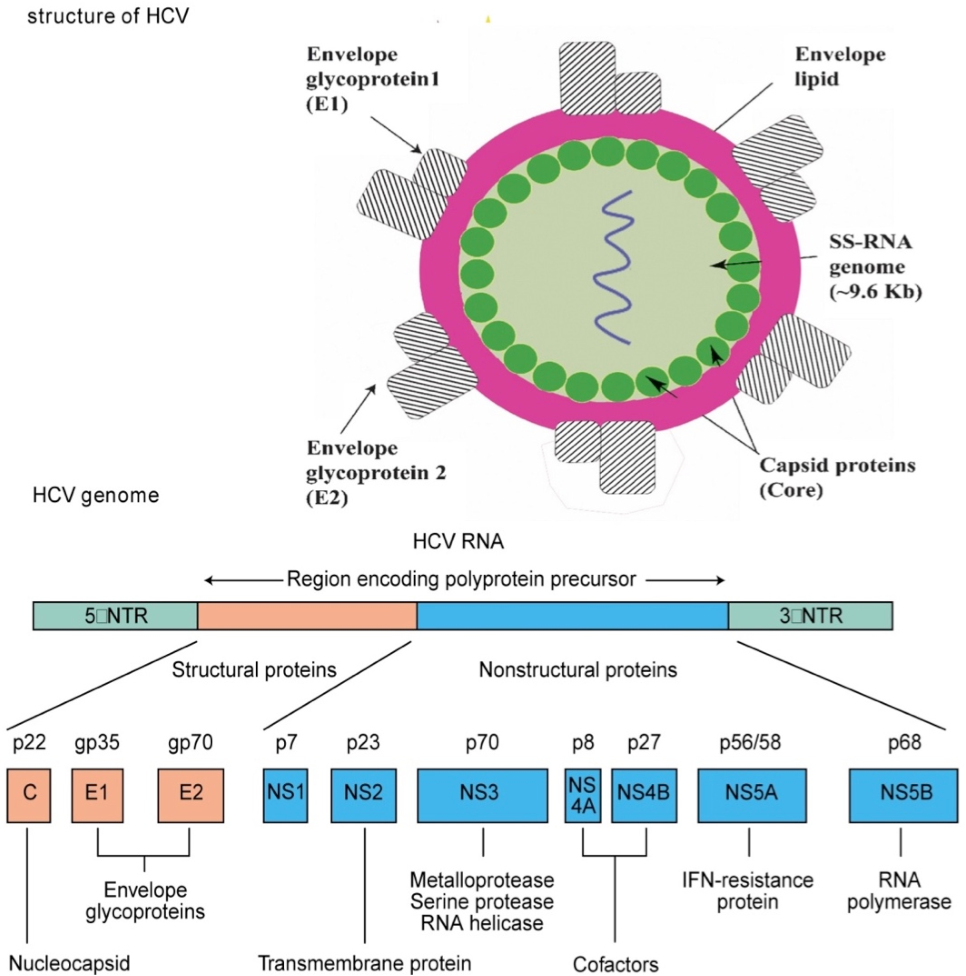 WHO now recommends HBeAg testing as an alternative to determine if there is an indication for prophylactic tenofovir to prevent mother-to-child transmission in countries and areas where HBV DNA testing is not available.
WHO now recommends HBeAg testing as an alternative to determine if there is an indication for prophylactic tenofovir to prevent mother-to-child transmission in countries and areas where HBV DNA testing is not available.
Testing pregnant women for hepatitis B and treating those who are indicated for it can be done in conjunction with measures to prevent mother-to-child transmission of HIV and congenital syphilis as part of antenatal care.This approach is often referred to as “triple elimination” because it eliminates mother-to-child transmission of three infections: HIV, syphilis and hepatitis B.
WHO also recently published a report “Progress report on HIV, viral hepatitis and sexually transmitted infections, 2019” ( 2019 Progress Report on HIV, Viral Hepatitis and Sexually Transmitted Infections), which outlines progress towards eliminating these infectious diseases. The report provides global statistics on viral hepatitis B and C, new infections, prevalence of chronic infections and mortality from these two widespread viruses, and key actions as of the end of 2016 and 2017.
In addition, since 2011, WHO has collaborated with countries, civil society and partners to annually celebrate World Hepatitis Day (one of the nine major annual health campaigns) to raise awareness and better understanding of the issue. viral hepatitis. The date of July 28 was chosen in honor of the birthday of the scientist, Nobel laureate, Dr. Baruch Blamberg, who discovered the hepatitis B virus and developed a diagnostic test and vaccine against this virus.
- World Hepatitis Day 2020 will be held under the slogan “Hepatitis Free Future” and will focus on the prevention of mother-to-child transmission of hepatitis B virus; On this day, WHO will present new guidance on HBV prevention in pregnant women and will call for increased national and international programs to combat mother-to-child transmission of hepatitis B, increased funding and increased access to prevention, diagnosis and treatment of hepatitis B to achieve the goal of elimination by 2030.

“,” datePublished “:” 2020-07-27T10: 00: 00.0000000 + 00: 00 “,” image “:” https://www.who.int/images/default-source/imported/hepatitis -pakistan-doctors-office.jpg? sfvrsn = 398d7336_0 “,” publisher “: {” @ type “:” Organization “,” name “:” World Health Organization: WHO “,” logo “: {” @ type “: “ImageObject”, “url”: “https://www.who.int/Images/SchemaOrg/schemaOrgLogo.jpg”, “width”: 250, “height”: 60}}, “dateModified”: “2020-07 -27T10: 00: 00.0000000 + 00: 00 “,” mainEntityOfPage “:” https://www.who.int/ru/news-room/fact-sheets/detail/hepatitis-b “,” @context “:” http: // schema.org “,” @ type “:” Article “};
90,000 Hepatitis A
Hepatitis A is a liver disease caused by the hepatitis A virus (HAV). The virus is spread primarily through the consumption of food or water by an uninfected (and unvaccinated) person contaminated with the faeces of an infected person. This disease is closely related to poor water supply or food contamination, poor sanitation, poor personal hygiene, and anal-oral sex.
Unlike hepatitis B and C, hepatitis A does not cause chronic liver disease and is rarely fatal, but it can be accompanied by severe symptoms and sometimes fulminant (with acute liver failure), often fatal.According to WHO estimates, 7,134 people died from hepatitis A worldwide in 2016 (which is 0.5% of the total mortality from all types of viral hepatitis).
Hepatitis A is present throughout the world and occurs both in isolated cases and in the form of epidemics, which tend to be cyclical. Viral hepatitis A is among the most common foodborne infections. Epidemics caused by contamination of food or drinking water can be explosive, such as the 1988 Shanghai epidemic., during which about 300,000 people were infected 1 . Epidemics can also be protracted and affect entire communities over several months as a result of person-to-person transmission. Hepatitis A virus persists for a long time in the environment and can remain viable even after some types of food processing commonly used to control and / or inactivate bacterial pathogens.
Viral hepatitis A can have serious negative socio-economic consequences for the population.Recovery and return to work, school, or daily life can take weeks or months. Significant damage can be done to the food service industry that has become the source of the spread of the virus, and to local labor productivity in general.
Geographic distribution
Areas where the hepatitis A virus is spread can be subdivided into areas with high, medium or low infection rates. At the same time, the infection rate is not identical to the incidence rate, since in young children the infection proceeds with mild symptoms.
Areas with high
infection rate 90,223 9,0002 In low- and middle-income countries with poor sanitation and hygiene, infection is widespread, and most children (90%) contract hepatitis A virus before age 10. most often asymptomatic
2 . Epidemics in these countries are rare because older children and adults tend to be immune.Symptomatic morbidity rates in these areas are low and outbreaks are rare.
Areas with low
infection rates 90,223 9,0002 High-income countries with good sanitation and hygiene have low infection rates. The disease can occur among adolescents and adults at high risk, such as people who inject drugs, men who have sex with men, and those traveling to areas with high hepatitis A endemicity, as well as isolated populations such as closed religious communities.In the United States of America, large outbreaks of hepatitis A have been reported among homeless people.
Medium
infection rate
In middle-income countries and areas with heterogeneous sanitation and hygiene conditions, a large proportion of the population does not tolerate infection in early childhood and reaches adulthood without developed immunity. Thus, the improvement of economic and sanitary and hygienic conditions in some cases leads to an increase in the proportion of the adult population who have not previously had viral hepatitis A and are not immune.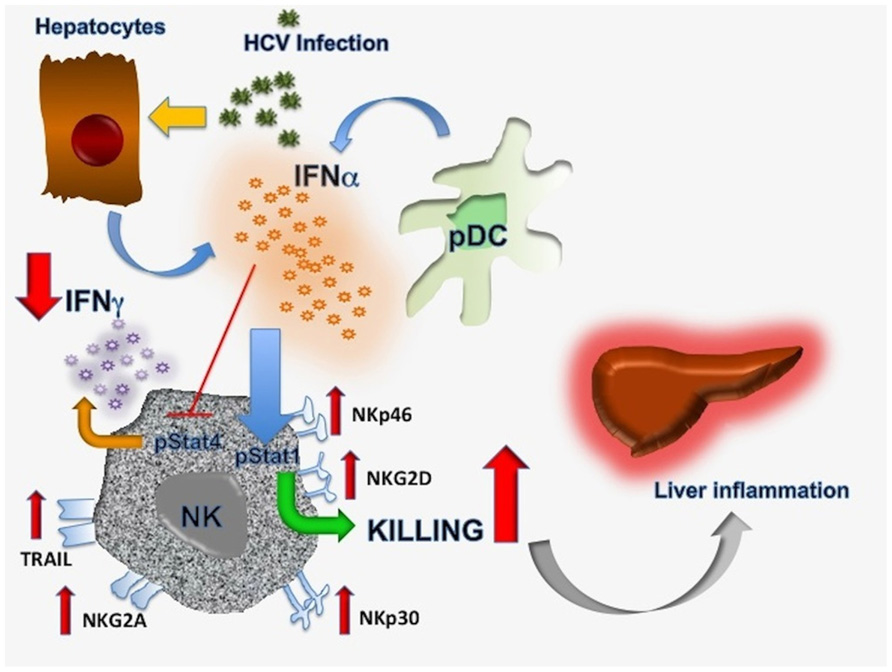 High susceptibility of representatives of older age groups in such areas can lead to a higher incidence and large outbreaks of viral hepatitis A. food or water contaminated with the faeces of an infected person. At the household level, infection can occur when the infected person does not practice good hand hygiene when preparing food for other family members.Waterborne outbreaks of hepatitis A are less frequent and usually result from sewage contamination of drinking water or improper water treatment.
High susceptibility of representatives of older age groups in such areas can lead to a higher incidence and large outbreaks of viral hepatitis A. food or water contaminated with the faeces of an infected person. At the household level, infection can occur when the infected person does not practice good hand hygiene when preparing food for other family members.Waterborne outbreaks of hepatitis A are less frequent and usually result from sewage contamination of drinking water or improper water treatment.
The virus can also be transmitted through close physical contact (for example, during anal-oral sex) with an infected person, while the virus is not transmitted during normal household contacts.
Symptoms
The incubation period for hepatitis A is usually 14-28 days.
Symptoms of hepatitis A can range from mild to severe and may include fever, malaise, loss of appetite, diarrhea, nausea, abdominal discomfort, dark urine, and jaundice (yellowing of the skin and sclera).The full range of symptoms does not appear in all infected people.
Clinical symptoms of hepatitis A are more common in adults than in children. The prevalence of severe forms of the disease and mortality are higher among the older age groups. In children under 6 years of age, the infection is usually mild and only 10% develop jaundice. In older children and adults, the symptoms are usually more severe, and in more than 70% of cases, the disease is accompanied by the development of jaundice.In some patients, hepatitis A recurs, and an exacerbation follows the recovery period. Nevertheless, after this, the disease, as a rule, ends with a complete recovery.
Who is at risk?
Anyone who has not been vaccinated or has had hepatitis A infection in the past can become infected with the hepatitis A virus. In areas where the virus is highly circulating (high endemicity), most hepatitis A infections occur in early childhood. Risk factors include:
- poor sanitary conditions;
- drinking water pollution;
- the presence of an infected person among family members; 90 070
- have sex with a person with acute viral hepatitis A;
- recreational use of psychoactive substances;
- same-sex sex in men; 90 070
- Travel to areas of high endemicity without prior immunization.

Diagnostics
According to the clinical picture, hepatitis A does not differ from other types of acute viral hepatitis. An accurate diagnosis is confirmed by a blood test for the presence of HAV-specific immunoglobulins M (IgM). In addition, reverse transcription polymerase chain reaction (RT-PCR) diagnostics can be performed to detect hepatitis A virus RNA, which may require referral to a specialized laboratory.
Treatment
There is no specific treatment for hepatitis A.Convalescence can be slow and take several weeks or months. It is imperative to refrain from inappropriate prescription of medications. Patients with hepatitis A should not be given acetaminophen / paracetamol and antiemetic drugs.
In the absence of acute liver failure, hospitalization of patients is not required. Treatment focuses on maintaining a comfortable and balanced diet, including replenishing fluid losses caused by vomiting and diarrhea.
Prevention
The most effective means of combating hepatitis A are improving sanitation, increasing food safety and expanding vaccination coverage.
The prevalence of hepatitis A can be reduced by the following measures:
- ensuring an adequate supply of safe drinking water;
- Organization of proper wastewater disposal in settlements; and
- following good personal hygiene practices, such as washing hands regularly before meals and after using the toilet.
There are several injectable inactivated hepatitis A vaccines on the world market. All of them are of comparable efficacy and have similar side effects.There is no registered vaccine for children under one year of age. An attenuated live vaccine is also used in China.
Within a month after the administration of one dose of the vaccine, the required concentration of antibodies is formed in almost 100% of the vaccinated. Even if an unvaccinated person comes into contact with a source of infection, administering one dose of the vaccine for the first two weeks can prevent the development of the disease. However, manufacturers recommend that two doses of the vaccine be administered to build up long-term immunity for 5–8 years.
However, manufacturers recommend that two doses of the vaccine be administered to build up long-term immunity for 5–8 years.
Millions of people worldwide have been vaccinated with inactivated injectable hepatitis A vaccine and no serious adverse events have been reported. Vaccination against hepatitis A can be given as part of routine immunization of children, as well as in combination with other vaccines recommended for international travelers.
Community vaccination
A comprehensive plan for the prevention and control of viral hepatitis should include vaccination against hepatitis A.When planning large-scale vaccination programs, a careful cost-benefit assessment should be carried out and alternative or complementary preventive measures, such as improved sanitation and health education, should be considered for better public hygiene.
Whether or not hepatitis A vaccine should be included in the childhood immunization schedule depends on the local epidemiological situation. It is necessary to take into account the proportion of people susceptible to infection in the population and the level of risk of contact with sources of the virus.In general, universal vaccination of children appears to be most appropriate in countries with moderate hepatitis A endemicity. Countries with low endemicity may consider vaccinating adults in selected high-risk groups. In countries with high endemicity, the use of the vaccine is of little interest since the majority of the adult population is naturally immune.
As of May 2019, 34 countries have included or planned to include hepatitis A vaccination for children in certain risk groups.
In many countries, immunization with inactivated hepatitis A vaccine involves two doses of vaccine, but other countries may consider adding a single dose of hepatitis A vaccine to the immunization schedule. Also, in some countries, vaccination is recommended for representatives of high-risk groups, such as:
- people who use psychoactive substances for recreational purposes; 90,070 90,069 travelers to countries where hepatitis A is endemic; 90,070 90,069 men who have sex with men; and 90,070 90,069 patients with chronic liver disease (due to the increased risk of serious complications from hepatitis A infection).

In the event of an outbreak of hepatitis A, recommendations for vaccination against hepatitis A should also be made taking into account the local epidemiological situation. When making a decision, an assessment should also be made of the feasibility of promptly organizing a mass vaccination campaign.
Vaccination campaigns for large outbreaks of hepatitis A are most effective in small communities when vaccinations are started early in the outbreak and coverage is high in many age groups.Vaccination work should be accompanied by health education to improve sanitation and improve hygiene and food safety.
WHO activities
In May 2016, the World Health Assembly adopted the first-ever Global Health Sector Strategy on Viral Hepatitis 2016–2021 It highlights the critical importance of universal health coverage and sets targets aligned with the Sustainable Development Goals.The main goal of the strategy is to eliminate viral hepatitis as a public health problem, which is reflected in the global targets to reduce by 2030 the number of new infections with viral hepatitis by 90% and the death rate from viral hepatitis by 65%. The strategy outlines the actions to be taken by countries and the WHO Secretariat to meet these objectives.
To support countries in achieving the global hepatitis targets of the 2030 Agenda for Sustainable Development.WHO is working in the following areas:
- raising awareness, promoting partnerships and mobilizing resources;
- Evidence-based policy development and data generation to inform action; 90 070 90 069 Improving health equity in the hepatitis response;
- prevention of the spread of infection; and 90,070 90,069 expanding coverage of screening, care and treatment services.
Since 2011, WHO has been working with countries, civil society and partners to conduct annual World Hepatitis Day events (as part of one of the nine major annual health campaigns) to raise awareness and build more deep understanding of the problem of viral hepatitis.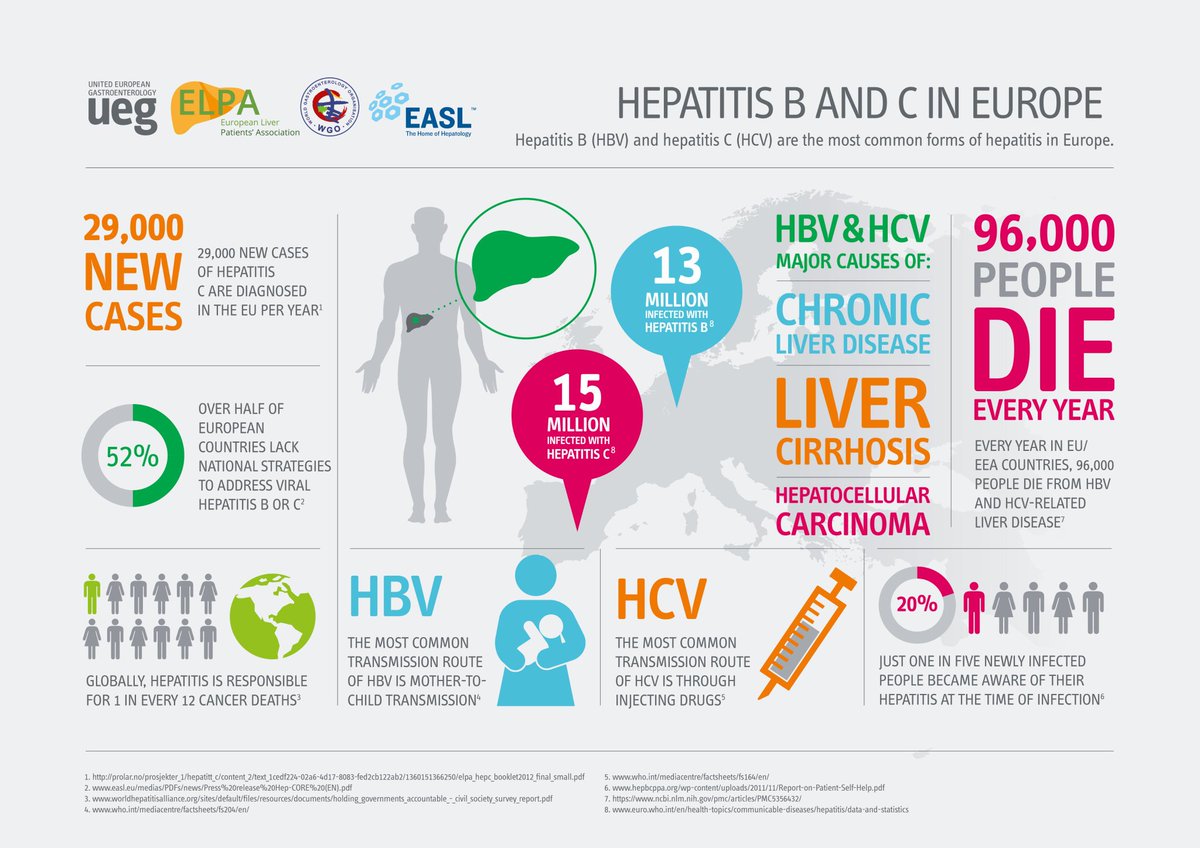 This day is held on July 28 in honor of the birthday of the scientist, Nobel Prize winner, Dr. Baruch Blamberg, who discovered the hepatitis B virus and developed a diagnostic test and vaccine against this virus.
This day is held on July 28 in honor of the birthday of the scientist, Nobel Prize winner, Dr. Baruch Blamberg, who discovered the hepatitis B virus and developed a diagnostic test and vaccine against this virus.
World Hepatitis Day 2020 will be held under the theme “Hepatitis Free Future” and will focus on the prevention of hepatitis B among mothers and newborns. On 28 July 2020, WHO will publish new guidelines for preventing mother-to-child transmission of the virus.
- An epidemic of hepatitis A attributable to the ingestion of raw clams in Shanghai, China.
Halliday ML1, Kang LY, Zhou TK, Hu MD, Pan QC, Fu TY, Huang YS, Hu SL.J Infect Dis. 1991 Nov; 164 (5): 852-9. - Hepatitis A virus seroprevalence by age and world region, 1990 and 2005.
Jacobsen KH, Wiersma ST. Hepatitis A virus seroprevalence by age and world region, 1990 and 2005. Vaccine 28 (2010) 6653-6657.
Anti-HCV, IgM
Anti-HCV, IgM – specific immunoglobulins of the IgM class to the proteins of the hepatitis C virus, indicating a possible infection or reactivation of the process, are a marker of an early stage of infection.
Synonyms Russian
Antibodies to hepatitis C virus, anti-HCV .
Synonyms English
Antibodies to Hepatitis C Virus, IgM; HCVAb, IgM.
Research method
Enzyme-linked immunosorbent assay (ELISA).
Which biomaterial can be used for research?
Venous blood.
How to properly prepare for the study?
- Do not eat for 2-3 hours before the study, you can drink clean non-carbonated water.
- Do not smoke within 30 minutes prior to examination.
General information about the study
Hepatitis C Virus (HCV) is an RNA-containing virus from the Flaviviridae family that infects liver cells and causes hepatitis.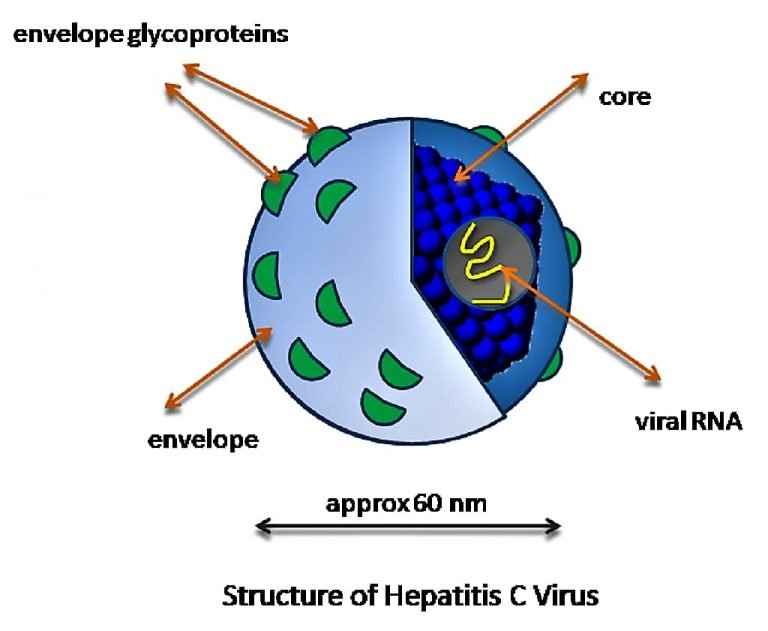 It is able to multiply in blood cells (neutrophils, monocytes and macrophages, B-lymphocytes) and is associated with the development of cryoglobulinemia, Sjogren’s disease and B-cell lymphoproliferative diseases. Among all causative agents of viral hepatitis, HCV has the greatest number of variations, and due to its high mutational activity, it is able to avoid the defense mechanisms of the human immune system.There are 6 genotypes and many subtypes of the virus, which have different meanings for the prognosis of the disease and the effectiveness of antiviral therapy.
It is able to multiply in blood cells (neutrophils, monocytes and macrophages, B-lymphocytes) and is associated with the development of cryoglobulinemia, Sjogren’s disease and B-cell lymphoproliferative diseases. Among all causative agents of viral hepatitis, HCV has the greatest number of variations, and due to its high mutational activity, it is able to avoid the defense mechanisms of the human immune system.There are 6 genotypes and many subtypes of the virus, which have different meanings for the prognosis of the disease and the effectiveness of antiviral therapy.
The main route of transmission of infection is through blood (during transfusion of blood and plasma elements, transplantation of donor organs, through non-sterile syringes, needles, tools for tattooing, piercing). Transmission of the virus is likely through sexual contact and from mother to child during childbirth, but this is less common.
Acute viral hepatitis is usually asymptomatic and remains undetected in most cases.Only 15% of those infected have an acute disease, with nausea, body aches, lack of appetite and weight loss, rarely accompanied by jaundice. In 60-85% of those infected, chronic infection develops, which is 15 times higher than the frequency of chronicity in hepatitis B. Chronic viral hepatitis C proceeds in waves with an increase in liver enzymes and mild symptoms. In 20-30% of patients, the disease leads to liver cirrhosis, increasing the risk of developing liver failure and hepatocellular carcinoma.
Specific immunoglobulins are produced to the nucleus (nucleocapsid core protein), envelope (nucleoproteins E1-E2) and fragments of the viral genome (non-structural proteins NS). In most HCV patients, the first antibodies appear 1-3 months after infection, but sometimes they can be absent in the blood for more than a year. In 5% of cases, antibodies to the virus are never detected. In this case, HCV will be indicated by the detection of antibodies to the antigens of the virus.
In the acute period of the disease, IgM and IgG antibodies to the nucleocapsid core protein are formed.During the latent course of the infection and during its reactivation, IgG antibodies to the non-structural proteins NS and the nucleocapsid core protein are present in the blood.
IgM to HCV begin to be produced 4-6 weeks after infection and quickly reach a maximum. After 5-6 months, their level falls and rises again during the reactivation of the infection. The criteria for the acute phase are symptoms of acute hepatitis in the absence of indications of similar diseases in the past, an increase in the level of liver enzymes, detection of anti-HCV, IgM (with an increase in titers during dynamic observation), detection of HCV RNA using PCR (carried out to clarify the activity of the process , stage of disease and monitoring of treatment).The correlation between the detection of RNA and antibodies (IgM) is 85-92%.
Prolonged circulation of IgM antibodies (more than 2 months) indicates a possible chronicity of the process.
After an infection, specific immunoglobulins circulate in the blood for 8-10 years with a gradual decrease in concentration or remain lifelong in very low titers. They do not protect against viral infection and do not reduce the risk of re-infection and disease development.
What is the research used for?
- For the diagnosis of viral hepatitis C, clarification of the activity of the process, the stage of the disease.
- For differential diagnosis of hepatitis.
When is the study scheduled?
- With symptoms of viral hepatitis and an increase in the level of hepatic transaminases.
- If known about previous hepatitis of unspecified etiology.
- When examining people at risk of contracting viral hepatitis C.
- During screening examinations.
What do the results mean?
Reference values: not found.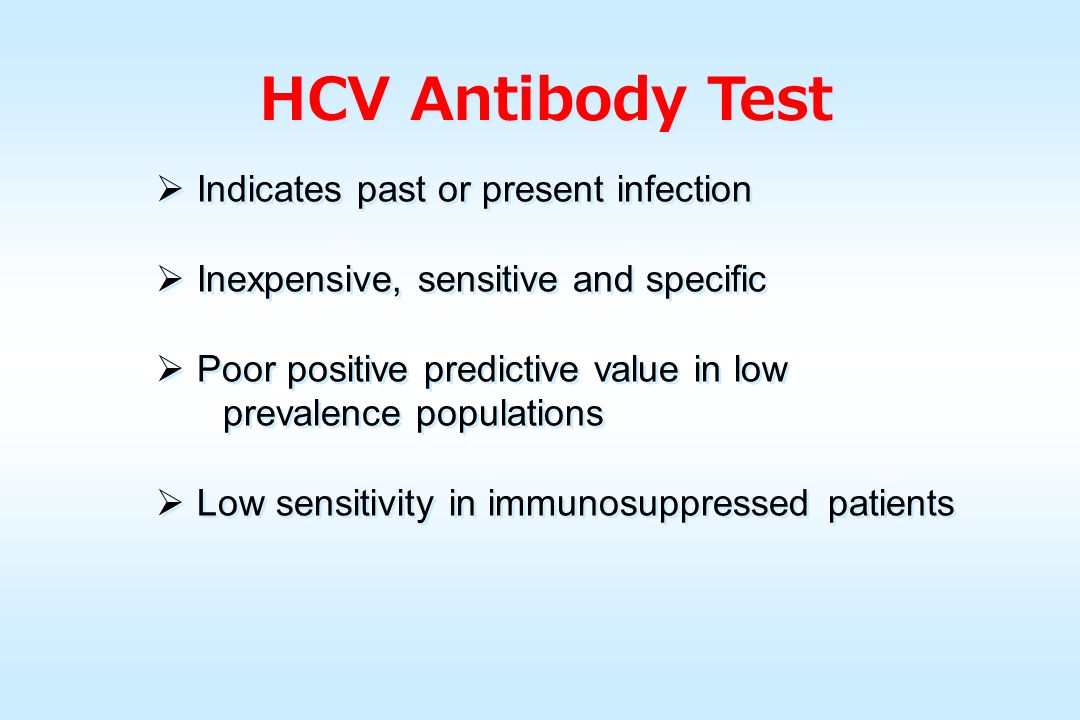
Reasons for a positive result:
- acute viral hepatitis C.
Reasons for a negative result:
- absence of hepatitis C virus in the body;
- low antibody levels – early post-infection;
- absence of antibodies in viral hepatitis C (seronegative variant, about 5% of cases).
What can influence the result?
- Rheumatoid factor in the blood contributes to a false positive result.
Download an example of the result
Important notes
- If the result is positive, to confirm the diagnosis of viral hepatitis C, a test is performed to determine the structural and non-structural proteins of the virus (NS, Core).
- With existing risk factors for infection and suspicion of viral hepatitis C, it is recommended to determine the RNA of the virus in the blood by PCR, even in the absence of specific antibodies.
Also recommended
- Anti-HCV, antibodies
- Antibodies to structural and non-structural proteins of the hepatitis C virus
- HCV, RNA [real-time PCR]
- HCV, genotyping (types 1a, 1b, 2, 3a, 4), RNA [real-time PCR]
- anti-HAV, IgM
- HBsAg, supersensitive
- Gamma-glutamyl transpeptidase (gamma-GT)
- Alanine aminotransferase (ALT)
- Aspartate aminotransferase (AST)
- Phosphatase alkaline total
- Total bilirubin
Who orders the study?
Infectionist, hepatologist, gastroenterologist, therapist.
Literature
- Harrison’s Principles of Internal Medicine. 16 th ed. NY: McGraw-Hill; 2005: 1822-1855.
- Lerat H, Rumin S, Habersetzer F, and others. In vivo tropism of hepatitis C virus genomic sequences in hematopoietic cells: influence of viral load, viral genotype, and cell phenotype.
 Blood. 1998 May 15; 91 (10): 3841-9. PMID: 9573022.
Blood. 1998 May 15; 91 (10): 3841-9. PMID: 9573022. - Revie D, Salahuddin SZ. Human cell types important for hepatitis C virus replication in vivo and in vitro: old assertions and current evidence.Virol J. 2011 Jul 11; 8: 346. doi: 10.1186 / 1743-422X-8-346. PMID: 21745397.
Antibodies to hepatitis C virus, sum. (Anti-HCV)
Hepatitis C is a disease caused by an RNA virus. The virus can be transmitted through blood, through non-sterile medical instruments, through organ and tissue transplantation, through sexual intercourse, from mother to child during pregnancy and childbirth. It multiplies in liver cells and causes acute or chronic hepatitis.The hepatitis C virus has several genotypes, due to frequent mutations, it is resistant to the effects of human immune defense mechanisms.
Viral hepatitis C is most often asymptomatic. Only in 15% of cases of acute illness, nausea, signs of intoxication, lack of appetite, and jaundice are rare. A minority of patients suffer hepatitis C as an acute illness and recover completely, while the majority of those infected develop chronic hepatitis C. A long-term chronic illness can lead to cirrhosis or liver cancer.
At the onset of the disease, antibodies to the components of the virus begin to form, first immunoglobulins M, later immunoglobulins G. Specific antibodies to the hepatitis C virus can be detected in the blood 3-8 weeks after the virus enters the body, but in some cases they may be absent during several months. In this case, the infection can be confirmed by a blood test for RNA of the hepatitis C virus. After the infection in recovered patients, specific antibodies persist for many years with a gradually decreasing concentration and can be detected in low amounts throughout life.Antibodies to hepatitis C do not protect against reinfection when they encounter the virus again.
The risk group for hepatitis C includes doctors and nurses, people who use medical and cosmetic services, drug addicts, patients who have received blood or organ transplants, children born to infected mothers who are carriers of the hepatitis C virus.
Analysis for antibodies to hepatitis C virus (HCV), total, allows you to identify specific immunoglobulins, the presence of which indicates a possible infection or a previous illness.The test is a screening test, it must be taken during hospitalization, before planned operations and during pregnancy.
In what cases the study is usually prescribed
- when examining patients preparing for planned hospitalization or surgery;
- for professional examinations and medical examinations;
- for suspected contact with infected blood or non-sterile medical instruments;
- when symptoms of liver damage appear;
- when examining pregnant women.
What exactly is determined during the analysis
The presence of specific total antibodies to the hepatitis C virus is detected by the IHLA method – a modification of the enzyme-linked immunosorbent assay.
What the
Test Results Mean
Result “Not detected” means that there are no specific antibodies to hepatitis C in the patient’s blood serum. This can be if the patient is healthy and has never met the hepatitis C virus. The absence of antibodies is possible for a short period at the onset of the disease, when the virus has entered the body, and the immune system has not yet developed antibodies to the hepatitis C virus (the so-called “serological window” period).
Result “Found” means that antibodies to the virus in the blood have been detected. A positive result is always given with the results of a confirmatory test. In the confirmatory test, antibodies to structural and non-structural proteins of the hepatitis C virus are determined.
Research result (example):
| Antibodies to hepatitis C virus, amount | DETECTED |
| Antibodies to hepatitis C, confirmatory test | |
| Core (antibodies to structural proteins of the hepatitis C virus) | 15. 26 26 |
| NS3 (antibodies to non-structural protein NS3 of hepatitis C virus) | 0.65 |
| NS4 (antibodies to non-structural protein NS4 of hepatitis C virus) | 0.02 |
| NS5 (antibodies to non-structural protein NS5 of hepatitis C virus) | 0/02 |
Antibodies can be detected in patients in several cases:
- the patient is currently suffering from acute or chronic hepatitis C;
- the patient once suffered from hepatitis C as an acute disease and is now healthy, the antibodies remained as an immunological memory of contact with the virus;
- the patient has a rare case of nonspecific serum reaction with the test system used.
Detection of antibodies to hepatitis C virus does not mean the presence of a disease and requires additional examination of the patient . In case of a positive answer, it is necessary to consult a doctor or an infectious disease doctor and prescribe additional tests. A PCR test for HCV (detection of RNA of the hepatitis C virus in the patient’s blood), biochemical markers – ALT, AST, GGT, alkaline phosphatase, bilirubin, a general blood test with a leukocyte formula, coagulogram may be prescribed.
Timing of the test
The test result “Not found” can be obtained the very next day after the analysis. If it is necessary to perform a confirmation test, the result may be delayed by 1–2 days.
Preparation for analysis
Blood can be donated no earlier than 3 hours after a meal during the day or in the morning on an empty stomach. You can drink clean water as usual.
Anti-HCV (Anti-HCV)
Anti-HCV (Anti-HCV)
Anti-HCV-specific immunoglobulins of the IgM and IgG classes to the proteins of the hepatitis C virus, indicating a possible infection or a previous infection. Hepatitis C Virus (HCV) is an RNA virus from the Flaviviridae family that infects liver cells and causes hepatitis. The main route of transmission of infection is through blood (with transfusion of blood and plasma elements, transplantation of donor organs, through non-sterile syringes, needles, tools for tattooing, piercing). Transmission of the virus is likely through sexual contact and from mother to child during childbirth, but this happens less often. Specific immunoglobulins are produced to the nucleus (nucleocapsid protein core), envelope (nucleoproteins E1-E2) and fragments of the viral genome (non-structural proteins NS).In most HCV patients, the first antibodies appear 1-3 months after infection, but sometimes they can be absent in the blood for more than a year. In 5% of cases, antibodies to the virus are never detected. In this case, HCV will be indicated by the detection of total antibodies to the antigens of the virus. In the acute period of the disease, IgM and IgG antibodies to the nucleocapsid core protein are formed. During the latent course of the infection and during its reactivation, IgG antibodies to the non-structural proteins NS and the nucleocapsid core protein are present in the blood.
Hepatitis C Virus (HCV) is an RNA virus from the Flaviviridae family that infects liver cells and causes hepatitis. The main route of transmission of infection is through blood (with transfusion of blood and plasma elements, transplantation of donor organs, through non-sterile syringes, needles, tools for tattooing, piercing). Transmission of the virus is likely through sexual contact and from mother to child during childbirth, but this happens less often. Specific immunoglobulins are produced to the nucleus (nucleocapsid protein core), envelope (nucleoproteins E1-E2) and fragments of the viral genome (non-structural proteins NS).In most HCV patients, the first antibodies appear 1-3 months after infection, but sometimes they can be absent in the blood for more than a year. In 5% of cases, antibodies to the virus are never detected. In this case, HCV will be indicated by the detection of total antibodies to the antigens of the virus. In the acute period of the disease, IgM and IgG antibodies to the nucleocapsid core protein are formed. During the latent course of the infection and during its reactivation, IgG antibodies to the non-structural proteins NS and the nucleocapsid core protein are present in the blood.
After the transferred infection, specific immunoglobulins circulate in the blood for 8-10 years with a gradual decrease in concentration or remain lifelong in very low titers. They do not protect against viral infection and do not reduce the risk of re-infection and disease development.
Preparation for examination
Do not smoke for 30 minutes before donating blood.
Indications for research
For the diagnosis of viral hepatitis C.
For the differential diagnosis of hepatitis.
To identify previously transferred viral hepatitis C.
Interpretation
Reference values - negative
Reasons for a positive result:
acute or chronic viral hepatitis C;
previous viral hepatitis C.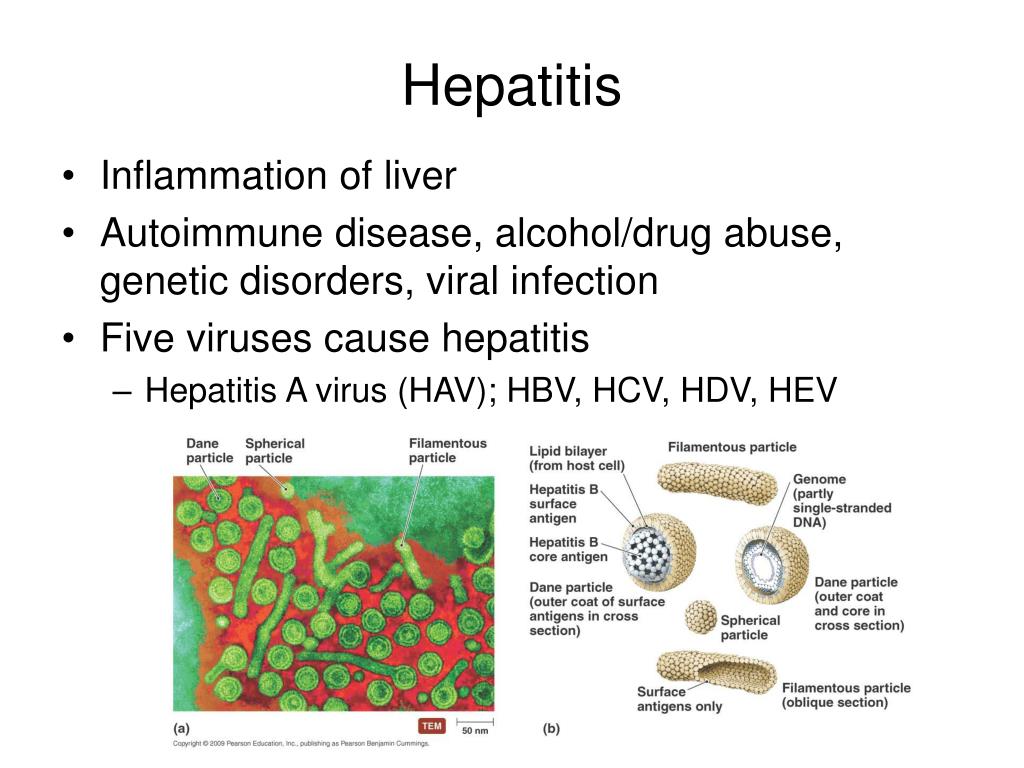
Reasons for negative result:
absence of hepatitis C virus in the body;
early period after infection;
lack of antibodies in viral hepatitis C (seronegative variant, about 5% of cases).
Results may be affected
If the material is taken and stored incorrectly, an unreliable result may be obtained.
Rheumatoid factor in the blood contributes to a false positive result.
If the result is positive, to confirm the diagnosis of viral hepatitis C, a test is performed to determine the structural and non-structural proteins of the virus – a test that confirms the presence of the antigen of the hepatitis C virus (NS, Core).
With existing risk factors for infection and suspicion of viral hepatitis C, it is recommended to determine the RNA of the virus in the blood by PCR, even in the absence of specific antibodies.
Assigned in conjunction with
Test confirming the presence of the antigen of the hepatitis C virus (antibodies to the structural and non-structural proteins NS, Core of the hepatitis C virus)
HCV, RNA, PCR (in plasma, mononuclear cells) quality
HCV, RNA, PCR) in plasma, mononuclear cells) quantitative
Genotyping of hepatitis C virus (1a, 1b, 2a, 2b, 3a)
anti-HAV, IgM
HBsAg
Biochemical blood test for gastrointestinal diseases
Thrombin time
Fibrinogen
Diagnosis of hepatitis C – SYNLAB Eesti
HCV is a small, single strand RNA virus that belongs to the Flavivirus family.HCV According to the Simmonds classification, it is divided into 6 main genotypes and many subtypes (more than 80). Genotypes are numbered from 1 to 6, subtypes in small letters a, b, c, etc. according to their identification in chronological order.
Infection occurs mainly parenterally, much less often perinatally, through household contacts or sexually.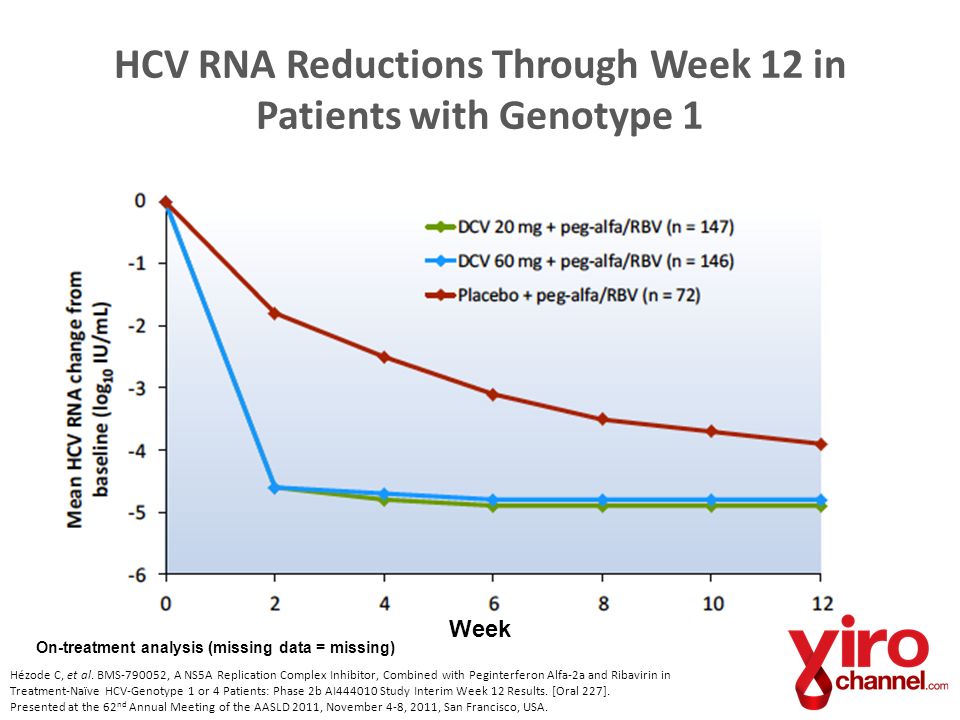

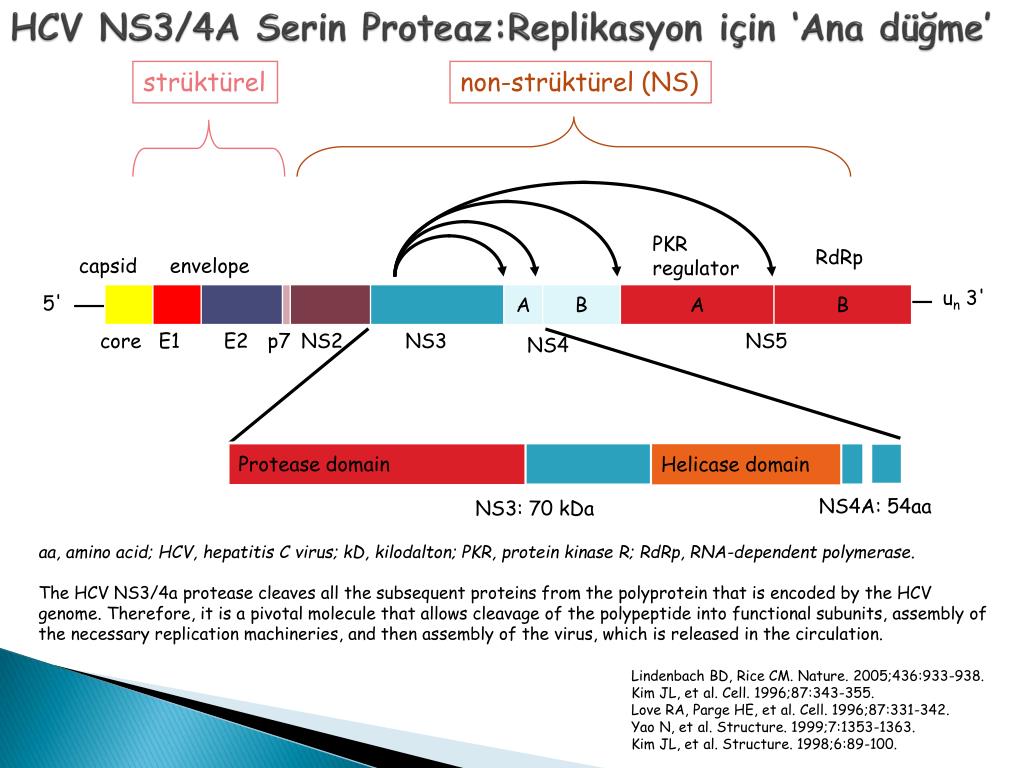
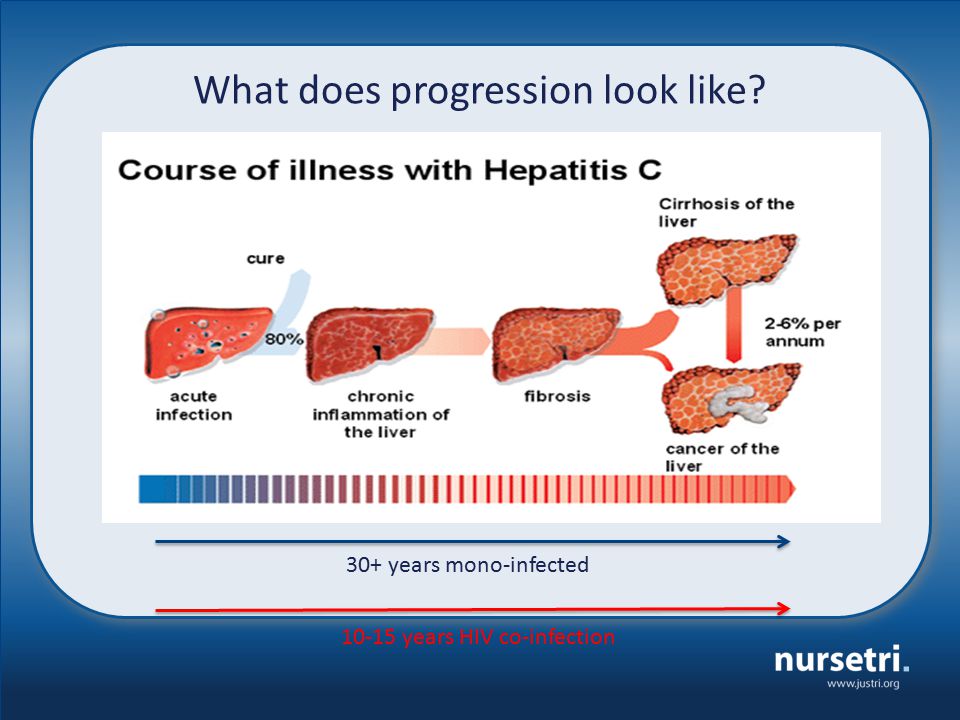 Centers for Disease Control and Prevention. https://www.cdc.gov/std/tg2015/emerging.htm. Accessed Oct. 18, 2019.
Centers for Disease Control and Prevention. https://www.cdc.gov/std/tg2015/emerging.htm. Accessed Oct. 18, 2019. In the United States, this is the most common way that people get hepatitis C.
In the United States, this is the most common way that people get hepatitis C.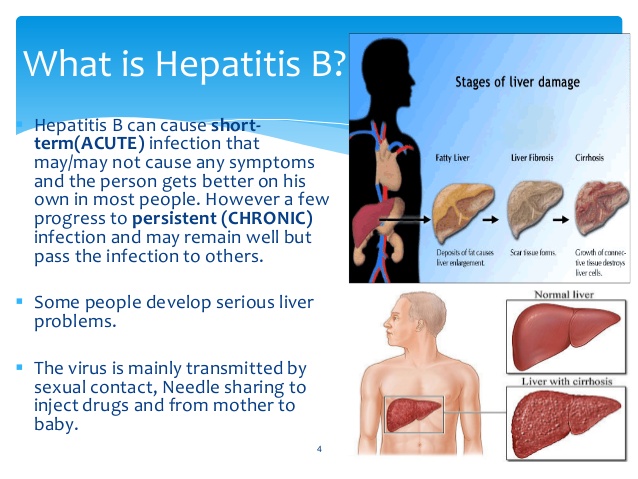 To see if you are responding to treatment, your doctor may order this test while you are undergoing treatment to find out if the amount of virus in your blood is changing.
To see if you are responding to treatment, your doctor may order this test while you are undergoing treatment to find out if the amount of virus in your blood is changing.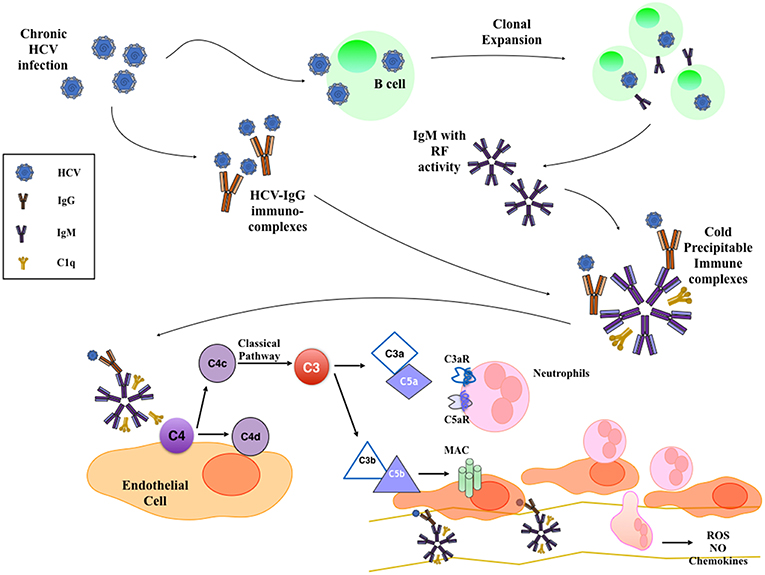 During this phase, most people show no symptoms at all. Among those who do have symptoms, the illness is usually so mild that most don’t even recognize that they have liver disease.
During this phase, most people show no symptoms at all. Among those who do have symptoms, the illness is usually so mild that most don’t even recognize that they have liver disease.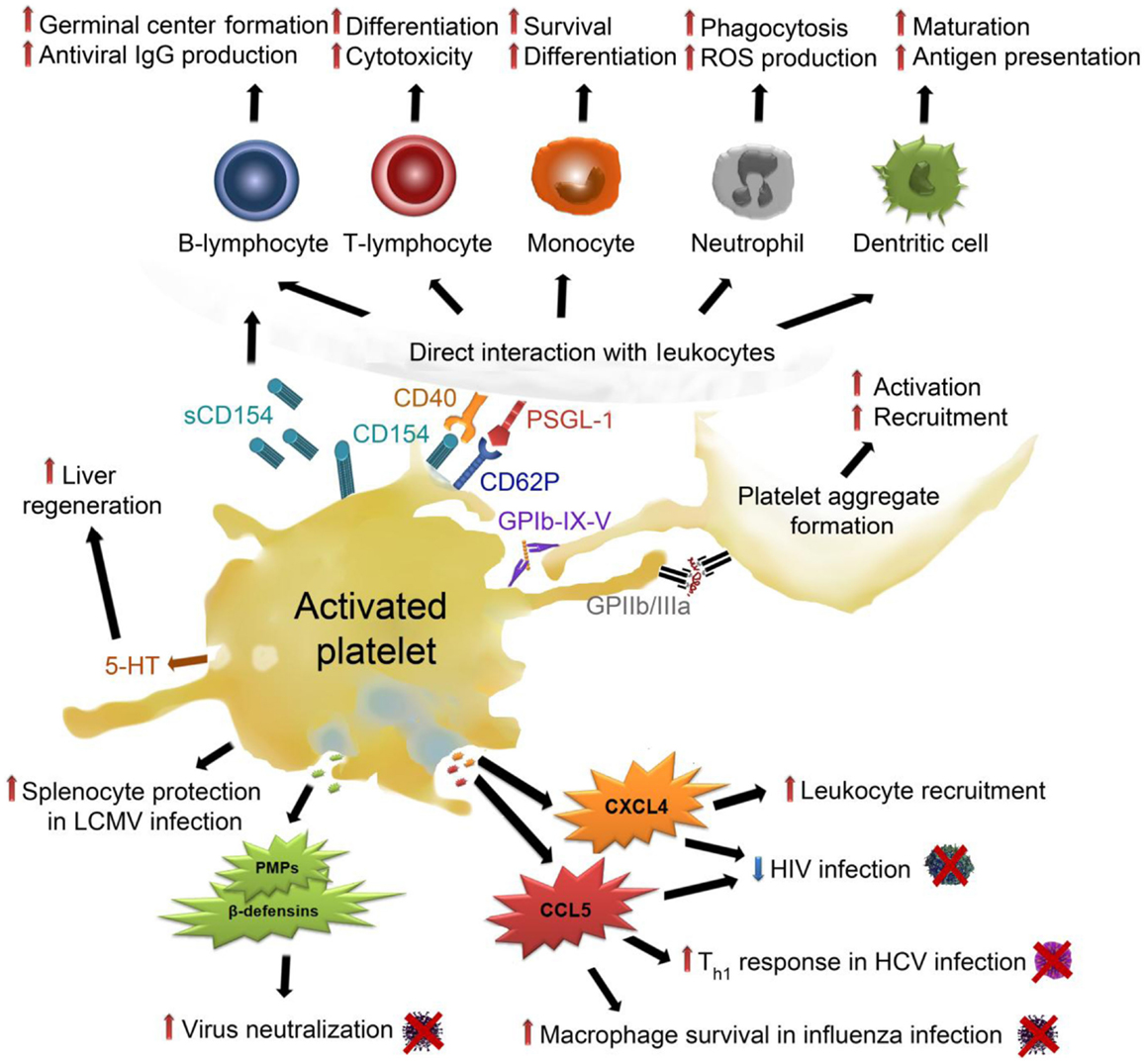


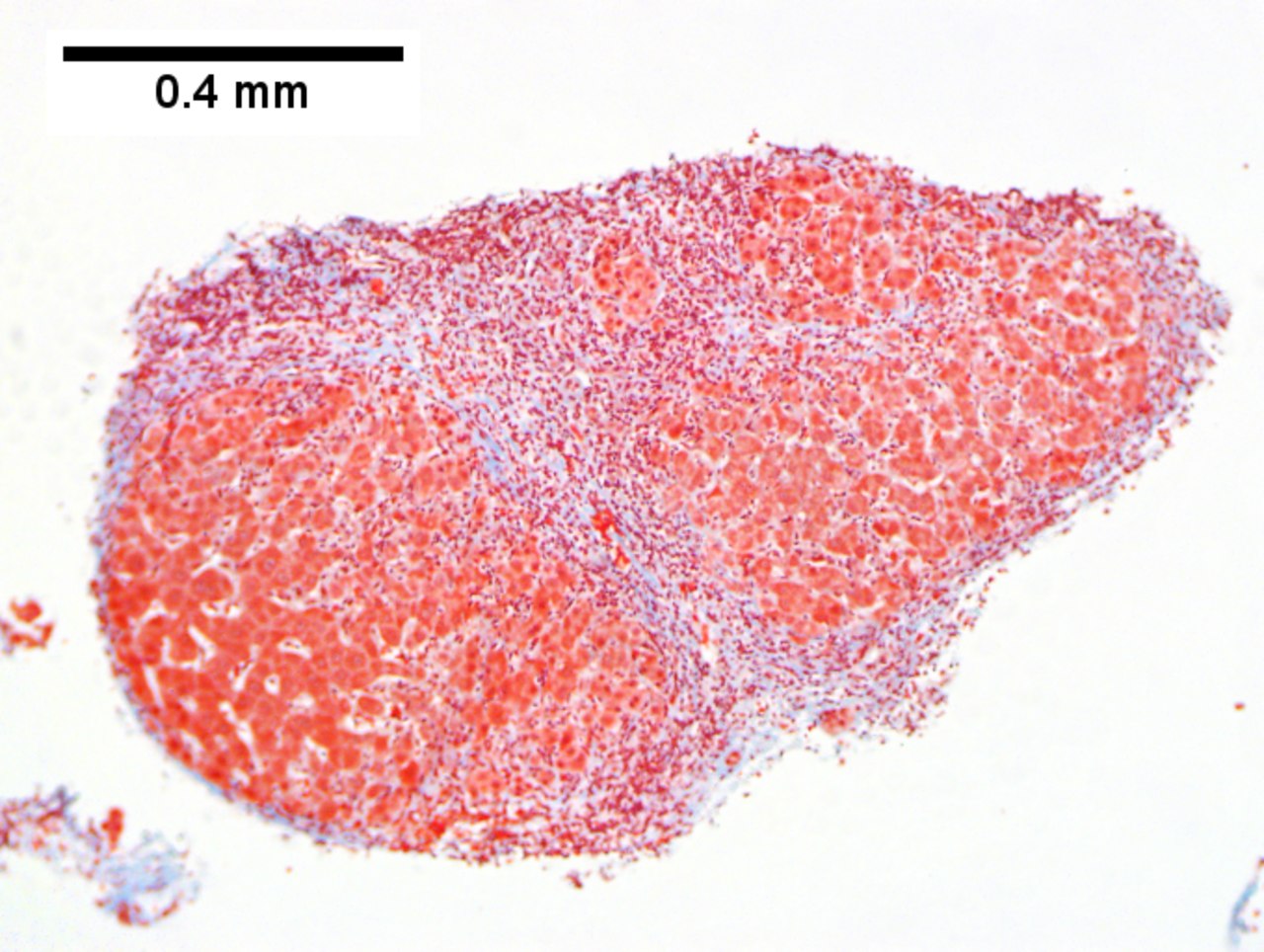
 Blood. 1998 May 15; 91 (10): 3841-9. PMID: 9573022.
Blood. 1998 May 15; 91 (10): 3841-9. PMID: 9573022.